A car blog about the latest car releases, concepts, design trends, and more!
Don't wanna be here? Send us removal request.
Text
Beyond Exotic: The Wild World of Mansory

Supercars are truly breathtaking machines. Meticulous attention to detail, artfully designed bodies, adrenaline-inducing performance, and awe-inspiring luxury are some of the key characteristics that have come to define this category of cars. Owning a supercar is undoubtedly a big life achievement that not only provides social status, but also sheer driving enjoyment. But for some, even the most exotic of cars are not enough to quench in their original form. This is where Mansory comes into the picture. Mansory is a car modification company that specializes in performance and body upgrades for luxury cars, supercars and SUVs. It is best known for its extravagant body kit products and pompous interior reupholstery. Just when you thought something like a Ferrari, Lamborghini, or Bentley couldn’t get more exotic, Mansory never ceases to amaze with its imaginative creativity.
Where it all began
Mansory was founded by Iranian-British car enthusiast Kourosh Mansory in 1989. With a passion for British luxury cars, the newly founded company initially focused on developing upgrades for Aston Martins, Bentleys, and Rolls-Royces. Today, Mansory designs parts for cars from 17 different brands, and even offers customization options for a model of jet ski, ATV and golf cart. The company has also produced a one-off custom motorcycle and lawn mower. Who knew cutting grass could be done in style?
Craftsmanship & Design
Mansory employs master crafters to ensure the utmost quality in its products, which are all manufactured in-house. Carbon fiber is available in a number of unique patterns such as chequered, forged and “stealth.” Body kits range from simple lips and diffusers to complex widebody transformations that look like they belong in a Need for Speed video game. Certain kits even involve the addition of new body lines that didn’t exist from the factory, and in some cases, entire body shape reconstructions. Interiors receive the same amount of attention. Intricate stitching patterns and exotic materials adorn the seats, dashboards, door panels and headliners of Mansory-treated cars. Below are a handful of Mansory kits that capture the essence of the company: living on the wild side.
Mansory “Cyrus”
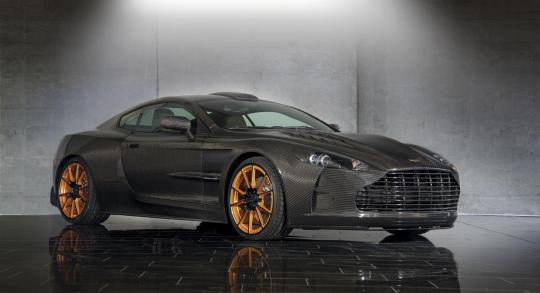


This full carbon fiber widebody kit for the Aston Martin DBS/DB9 features front bumper and front quarter panel air vents that are inspired by the ultra rare Aston Martin One-77. The rear includes a large diffuser with center exit exhaust. Handling is improved with lightweight wheels and upgraded suspension, while power delivery responsiveness is enhanced with a new exhaust manifold, catalytic converter, and exhaust pipes. The interior is reupholstered with detailed carbon fiber, contrast gold stitching and kick plates with the Mansory logo. Only 15 Cyrus kits were produced for this model of Aston Martin.
Mansory GTC V8

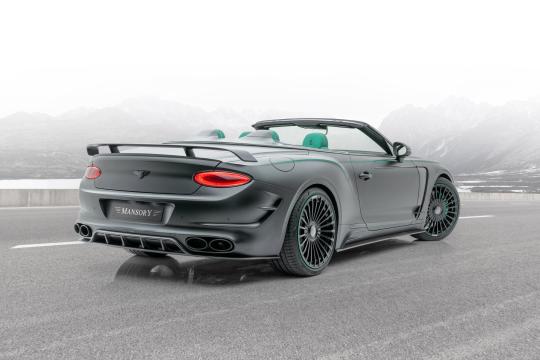
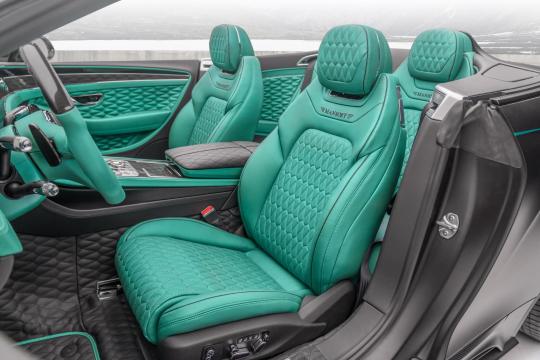
New front grille, bumpers, widebody fenders, vents, aerodynamic lips, exhaust pipes, rear spoiler and wheels transform the Bentley Continental GT Convertible into what leaves the impression of a tuner car. The interior is beautifully quilted in “chrome oxite green,” along with accents of the same color on the exterior, which together compliment the matte black paint. Performance options include ECU software tuning, exhaust system upgrades and lowered suspension.
Mansory “Le Mansory”


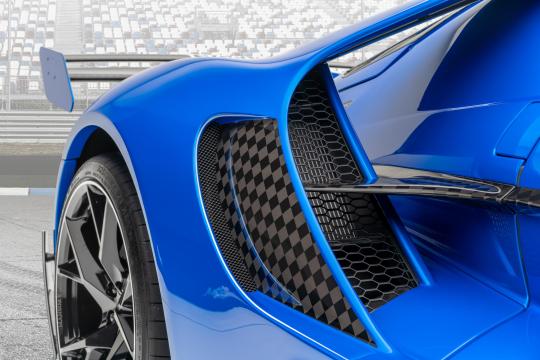

The Ford GT is a limited production supercar that pays homage to the iconic GT40 race car of the 60′s, which was the first American car to win the 24 Hours of Le Mans endurance race in 1966. “Le Mansory” is a play on the name “Le Mans.” This kit was made as a celebration of Mansory’s 30th anniversary, and is limited to 3 examples worldwide. Ford GTs treated with this special package are metamorphosed with a full carbon fiber widebody kit painted in an exclusive shade of blue, accompanied by reshaped headlights, new front and rear bumper designs, new rear wing, triple-tip exhaust pipes, and lightweight forged wheels. Visible throughout the exterior is Mansory’s unique chequered carbon fiber pattern. The interior is equally flashy with its perforated white seats, white dashboard with blue accents, and forward-pointing arrows in the headliner and kick plates. Power and torque improvements make for a slightly higher top speed than regular Ford GTs.
Mansory “Venatus EVO”



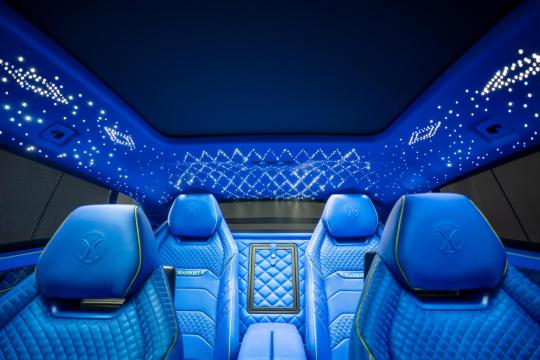
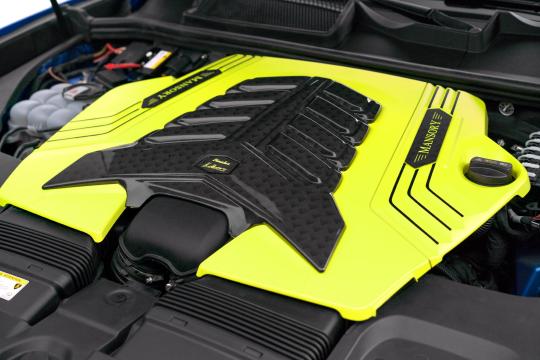
SUVs receive no less attention than coupes at Mansory. The Lamborghini Urus has quite the extroverted design from the factory in its sharpness and angularity, however Mansory has managed to make it even more extreme. As we’ve now become accustomed to expect with the company, this widebody kit spares no body panel without carbon fiber, vents and aerodynamic lips. Anything that can be modified, is. The interior is gloriously all-blue in this example, with diamond quilting everywhere where the eye can see and a lavish starlight headliner. A yellow engine cover matches with the interior’s accent stitching and exterior’s accent lines.
Conclusion
Customizing a car is a great way to showcase your personal taste and style. There is no shortage of aftermarket parts nowadays, whether it be for an affordable street car or a high-end supercar. Mansory is not the only company that specializes in aftermarket upgrades for exotic luxury and performance cars, but it is perhaps the most controversial in its ludicrous design approaches that are especially upsetting to automotive purists who prefer such cars in their original form. Mansory’s work often stirs commotion and certainly isn’t everyone’s taste, but there is no denying it that the company is composed of courageous designers that are not afraid to try something new.
#Mansory#AstonMartin#DB9#Bentley#ContinentalGTC#FordGT#Lamborghini#Urus#supercars#luxurycars#exoticcars#expensivecars#modifiedcars#carpassion#carlifestyle#carlife#carlove#carenthusiast#carblog#autoblog#amazingcars#amazingcars247#bestcars#lovecars#fastcars
2 notes
·
View notes
Text
Car Design Trend: Squinting “Eyes”

Every decade sees new car design trends that come to define that generation of vehicles. In the early 2010’s, over-sized grilles became highly popular as a showcase of brand identity. Lexus and Audi were some of the first pioneers of the now-expected gigantic maw of modern cars. Today, even regular commuter cars that once looked tame, such as the Toyota Avalon, now feature grilles that dominate the vast majority of the front fascia. Looking at various recently redesigned cars, it seems that a new design trend has begun that could potentially define the cars of the ‘20s: a front fascia that leaves the impression of squinting eyes. The front of an automobile generally follows the convention of two sets of lights: primary upper (typically the headlights) and secondary lower (typically the fog lights). This new design direction involves slim upper lights that create a face of intense glare, like a predator stalking its prey.
Cadillac Escalade
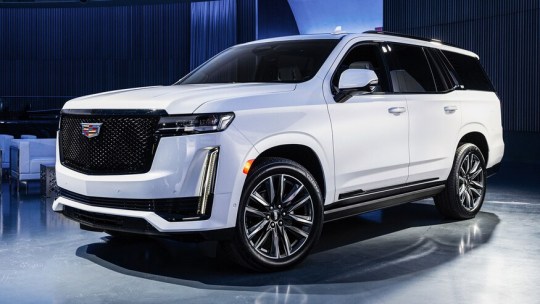
2021 Cadillac Escalade

2021 Escalade (left) and 2020 Escalade (right)
The Escalade is truly giant, measuring over seventeen and a half feet long and over six feet wide and tall. Considering the hulking proportions, a wide and presentable grille makes sense. So do large and pronounced headlights. The previous model featured both. The new 2021 Escalade retains a large grille but now has slim horizontal headlights, arguably too small for such a sizable vehicle. However, thanks to enlarged daytime running/turn signal lights that extend vertically underneath the headlights, the space left behind is appropriately filled-in. With these new lights, the face of the Escalade has changed. It now has a distinct “squint” that creates a more dramatic expression than before.
Chevy Bolt
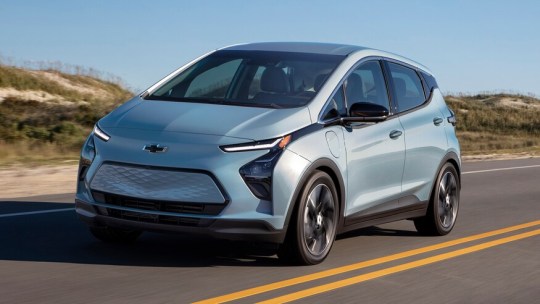
2022 Chevy Bolt
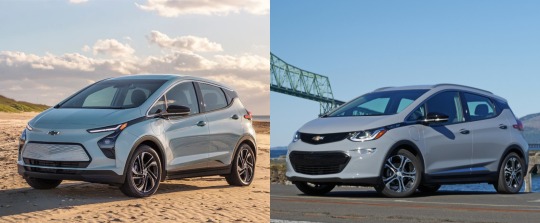
2022 Bolt (left) and 2021 Bolt (right)
In comparing the new to the outgoing Chevy Bolt, the first immediate change is the “facial” expression, transitioning from a cheerful grin to a fierce glare, thanks to slender upper lights and a downturned grille. Interestingly, the upper lights are only daytime running lights and turn signals, with the larger light assembly below being the headlights themselves. We frequently associate the headlights as a car’s “eyes,” although in the case of the new Bolt, that role is fulfilled by decorative daytime lights.
Hyundai Kona & Santa Fe

2022 Hyundai Kona

2021 Hyundai Santa Fe
Hyundai has been designing cars with narrow lights for some years now. The Kona has featured this design approach since it first debuted in 2017, and the Santa Fe since its fourth generation launched in 2018. Both models have been pushed further into that direction with new facelifts. Now even slimmer and sharper, the updated upper lights create a focused gaze that is especially perceptible in the Santa Fe, with its two sharp daytime running bars. As with the Chevy Bolt, both Hyundais have their headlights below the daytime running lights.
Mitsubishi Outlander
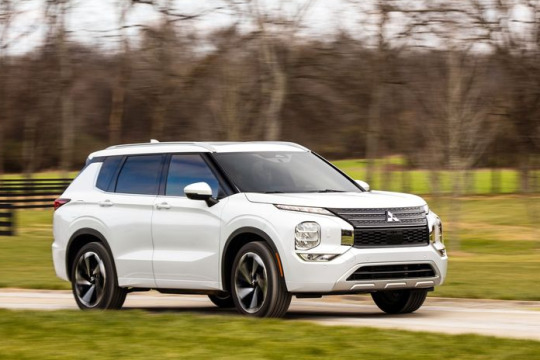
2022 Mitsubishi Outlander
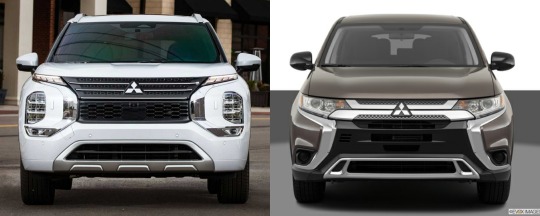
2022 Outlander (left) and 2020 Outlander (right)
The recently redesigned Mitsubishi Outlander now has a girthier front fascia that leaves a stronger initial impression than the outgoing model, appearing much more resilient and confident. This is thanks to sleek upper lights that produce an angry squint, large lower headlights, and a thick decorative chrome line, altogether generating a tougher look than before.
Nissan Qashqai

2022 Nissan Qashqai

2022 Qashqai (left) and 2020 Qashqai (right)
The Nissan Qashqai, known as Rogue Sport in the US, now features a fresh design for 2022. Looking at the front, the “V-Motion” grille has grown, the air vents on the sides are much sharper, and the lights have been put on a diet. Super slender boomerang lights create a sharp face with a determined expression that compliments the Qashqai’s newfound angularity.
Conclusion
The brain is quite efficient in differentiating one human face from another, but sometimes we see faces in objects or patterns that otherwise don’t have any. This phenomenon is known as Pareidolia, and is the explanation for why we tend to perceive faces in cars. While the overall shape and proportions of a car make up the majority of its design, the headlights and grille are perhaps the most important in their ability to set the overall tone and expression of the design. Looking at cars from this century, and a general evolution one can notice is the move from neutral to angry front fascia expressions. This can be attributed to over-sized grilles that are frequently downturned and inward-slanted headlights, together mimicking an angry human grin. And now, a new face of automotive design has arrived. One that is not only angry, but also stares intensely with squinting “eyes” that create an observant expression. This could become the defining characteristic of front fascia car design of the current decade. Only time will tell.
#cardesign#carenthusiast#carpassion#carblog#autoblog#CadillacEscalade#ChevyBolt#HyundaiKona#HyundaiSantaFe#MitsubishiOutlander#NissanQashqai#suv#carlife#carlove#carlifestyle#amazingcars#amazingcars247#newcars
0 notes
Text
Carving New Paths: 2022 Nissan Pathfinder

The name of a car model is an important identifier that serves to inform about the type of experience it offers and what it's meant for. While many car companies use arbitrary sounding acronyms nowadays, Nissan mostly sticks to actual names that aid in gaining a sense of what each car represents. Pathfinder has "off-road" written in its name, sounding like a car that is meant to find its own avenues in wild terrains, unbeknownst to the average road-goer. The original Pathfinder of the 80’s was a tough body-on-frame brick that was introduced as a competitor against the likes of Ford Bronco and Jeep Cherokee, hence the outdoorsy nameplate. Over three decades of Pathfinders later, and the model has transformed into more of a family-hauler than a rock-crawler. While the fifth-generation 2022 Pathfinder remains more of a family SUV, it does a much better job of living up to its name than the previous model. Now featuring a new drive-mode selector that optimizes the vehicle for various terrains, a traditional automatic instead of a continuously variable transmission, and an updated design that looks much tougher thanks to its boxy and rugged style, the Pathfinder nameplate has now been respectably strengthened in its identity.
Exterior
Front
Muscular and powerful is what comes to mind with the new Pathfinder’s front fascia. Nissan’s signature “V-Motion” grille and boomerang headlights dominate the available real estate, setting a strong tone with their unmissable presence. The lower skid plate garners attention as well with its silver paint and three rectangular grooves that mirror the three parallel slots in the upper grille, which are a nod to older Pathfinders that had three air-intake openings at the front. A sharp vertical line connects the headlights and lower air inlet, accentuating the sheer height of the front end.
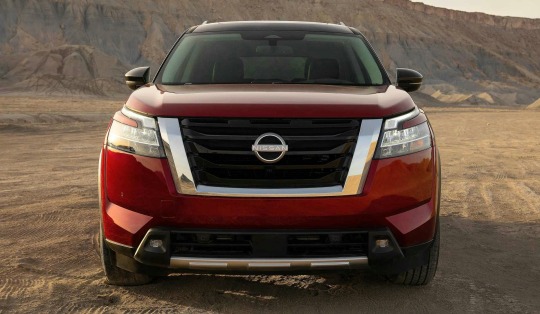
2022 Nissan Pathfinder front

2022 Nissan Pathfinder front-side
Side
At the side we have a floating roof design, achieved through black painted A, B and D-pillars that connect to a black roof, and a two-tone C-pillar. Two simple body lines extend from the headlights and taillights toward the center, and a silver side skirt rests between plastic-contoured wheel arches. Overall, the side-profile looks clean and easy to follow. However, in my eyes, the C-pillar situation looks somewhat abrupt, leaving me wondering how it would have looked if it was entirely black.

2022 Pathfinder side
Rear
The rear loses no time in letting you know what car this is, with “Pathfinder” written in large font across the trunk. The taillights are slim and simple, connected by a black painted bar with Nissan’s freshly updated badge in the center. A silver painted lower bumper area looks fittingly tough, and a subtle vertical line on either side emphasizes the height of the rear.

2022 Pathfinder rear
Interior
The interior continues the sturdy, off-road look with a wide and flat dashboard that resembles a pickup truck interior. The steering wheel has a subtle flat-bottom design and a silver lower connector that mimics the “V-Motion” grille shape. The gauge cluster is all-digital, and at the center is a protruding infotainment screen that has become expected with modern cars. The gear selector is neatly small and touch-pad like, forgoing the traditional gear lever that was seen in the previous model. This particular example is a top-of-the-line Platinum trim, and so it features luxurious black and brown quilted leather seats that appear to offer plush comfort above all else.
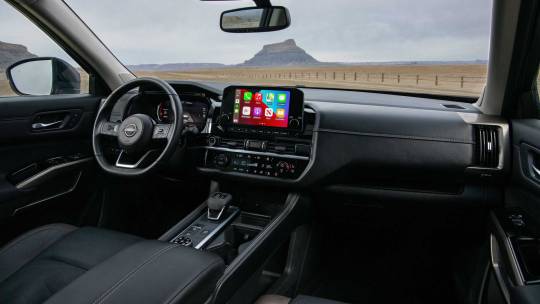
2022 Pathfinder interior
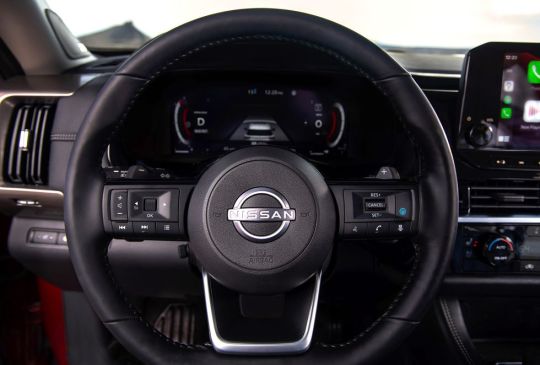
Steering wheel close-up

Gear selector close-up

Quilted leather seats
Living up to the Pathfinder name
It wouldn’t be much of a Pathfinder if it didn’t also demonstrate off-road capabilities. A new drive mode selector allows the user to prepare the car for various conditions and tasks. The seven available modes are: Sand, Mud, Snow, Standard/Road, Eco, Sport and Tow. The engine is the same as from the outgoing model, a 3.5-liter V6 with 284 horsepower and 259 lb-ft of torque, although now it is mated to a nine-speed automatic, which should instill more confidence in the available 6000 lb towing capacity than a CVT (Continuously Variable Transmission), as seen in the previous model. CVTs are great for fuel economy, smoothness of drive, and keeping the engine in its optimal power range, since they don’t have any physical gears to shift through and instead continuously adjust the diameter of two pulleys that are connected through a contracting and expanding steel belt, essentially allowing for an infinite number of gear ratios. These advantages work well for regular road vehicles, but not necessarily for sport or off-road cars. CVTs generally lose out on responsiveness of power delivery, don’t provide much driver engagement since there are no gear shifts to feel, and are not very reliable for highly taxing duties such as towing or racing due to their pulley-belt construction that is subject to premature wear, as compared to a standard automatic with physical gears. The new transmission will likely provide more assurance for the brave adventurer that seeks roads less traveled by.
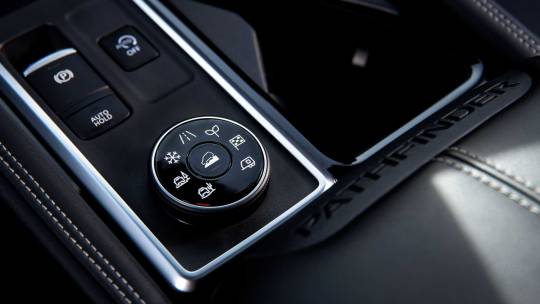
Drive-mode selector
The 2022 Pathfinder will go on sale this summer, with estimated pricing ranging from the low $30,000′s to the mid $40,000′s for the Platinum trim. Taking into account the freshly robust design and switch to a traditional automatic transmission, the new Pathfinder will easily prove itself more versatile than the outgoing model and altogether, a better path-finder.
#Nissan#Pathfinder#NissanPathfinder#SUV#newcar#carnews#offroadsuv#familysuv#carblog#autoblog#carpassion#carenthusiast#lovecars#carlove#japanesecar#amazingcars#bestcars#amazingcars247#carlifestyle#carlife
0 notes
Text
2022 BMW M5 CS: The Ultimate Bavarian Four-Door

Track racing is typically a solitary activity that you wouldn’t perform with your friend or significant other in the passenger seat unless they specifically expressed interest. The dramatically changing inertia and g-forces that result from pushing your car’s power and grip might not sit well with everyone’s stomach. Even if you really wish to bring someone along for the ride, you do need to consider their desires first… but not with the 2022 BMW M5 CS. Featuring bolstered bucket seats for front and rear occupants, everyone is meant to come along for the ride. So strap in, take a deep breath, and let your speed-crazed car enthusiast friend rip their new German track toy around the Nürburgring as you sit in the back, eagle-eyed, pondering why you even became friends with this four-wheel-machine-loving adrenaline freak in the first place. But hey, it is quite exciting isn’t it? Now the quickest and most powerful production street car from BMW, the M5 CS makes no compromises in achieving the ultimate performance experience and design aesthetics.
Performance
Powered by a 4.4-liter, twin-turbo V8 with 627 horsepower and 553 lb-ft of torque, the M5 CS can accelerate from 0-60 in a supercar time of 2.9 seconds and is capable of an impressive top speed of 190 mph. While the CS makes only 10 additional horsepower and the same amount of torque as the already available M5 Competition, it does also weigh 230 pounds less thanks to extensive use of carbon fiber all throughout the car, inside and out. And when combined with various handling improvements, such as standard lightweight forged wheels, carbon ceramic brakes, massive 275/35 front and 285/35 rear Pirelli P Zero Corsa tires, stiffened anti-roll bars and lowering springs, the CS makes for an overall more track-focused experience that a die-hard enthusiast will surely appreciate. There is also a cool new “track” mode that aims to keep focus on the drive itself by disabling certain driving aids, dimming the infotainment display, and turning off the speakers.

M5 CS engine bay, with carbon fiber engine cover and hood
Design
The M5 CS is meant as more than just an improved driving experience from standard M5 models, but also as a statement of exclusivity. Boasting unique styling cues and colors, there is no mistaking its strikingly muscular appearance for anything other than a symbol of pure power and performance.
Front
All throughout the exterior, the CS features many one-of-a-kind design elements and details that grants a distinctive appearance, with Gold Bronze and carbon fiber being at the center of the theme. At the front, we can see a Gold Bronze colored grille and badge, carbon fiber splitter, and special yellow-tinted LED lights inspired by the headlights of BMW race cars, such as the M8 GTE. The Gold Bronze and yellow match wonderfully with this particular example’s Frozen Deep Green Metallic paint job. The bumper design itself looks strong and aggressive, with large air vent openings to accompany the air-hungry V8 inside.
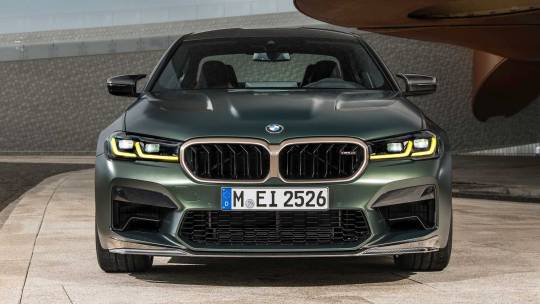
M5 CS front

Yellow-tinted daytime running lights

Gold Bronze Kidney Grille
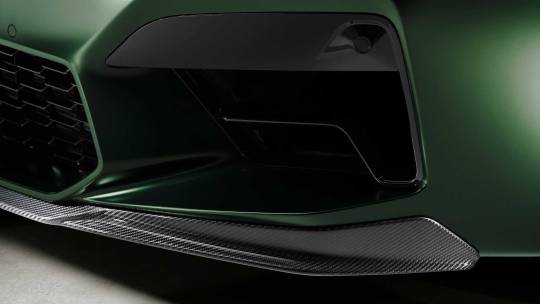
Carbon fiber front splitter
Side
The side profile looks powerful thanks to a sharp body line that moves from the air vent straight toward the rear taillight, accompanied by a parallel line down at the side skirt. But the most noticeable aspect is of course the gorgeous 20-inch forged Y-spoke wheels, finished in the beautiful Gold Bronze that we’ve now come to expect with the M5 CS. They are complimented by large six-piston red brake calipers at the front (single-piston at the rear) and drilled carbon ceramic rotors. Gold calipers are available too.

M5 CS side

Gold Bronze Y-Spoke wheel
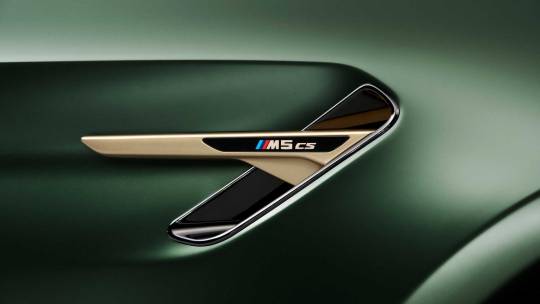
Gold Bronze fender vent with M5 CS badging
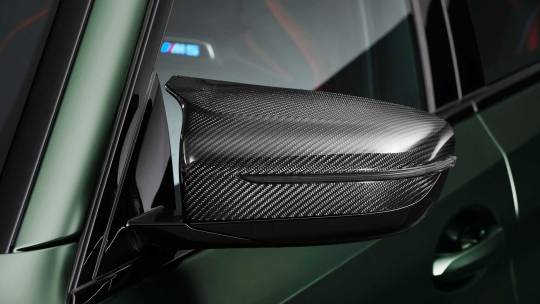
Carbon fiber mirror cover
Rear
The rear continues the CS theme with a Gold Bronze M5 CS badge, carbon fiber diffuser and trunk lip spoiler. Peeking through the diffuser are quad exhaust tips, because you wouldn’t expect anything less with a sport sedan like this. The taillights are nicely tinted at the perimeter, fitting well with the dark green and carbon fiber.

M5 CS rear

Carbon fiber rear diffuser with quad exhaust tips

Carbon fiber rear lip spoiler
Interior
The interior will easily spoil the occupants with its astonishing intricacy and exotic materials. Alcantara steering wheel with 12 o’clock mark, carbon fiber paddle shifters, red stitching, CS logo on the carbon fiber dashboard, Nürburgring track outline on the headrests, heavily bolstered front bucket seats with carbon fiber backs and openings for racing seat belts, rear bucket seats with center seat deletion and CS logo in its place… all these elements come together to form an ultra-sporty cabin that constantly reminds of the specialty of this car.

M5 CS interior

Alcantara steering wheel with subtle 12 o’clock center marker
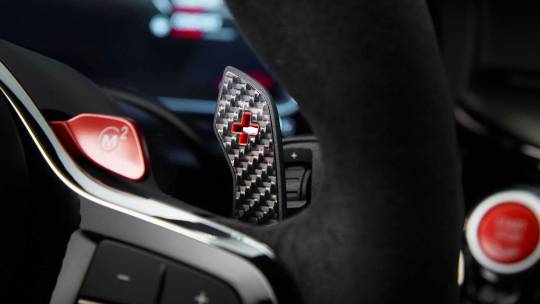
Carbon fiber paddle shifter

“CS” (Club Sport) logo on carbon fiber dashboard

Merino Leather and Alcantara front bucket seats with Mugello Red stitching

Nürburgring track outline on headrest

Carbon fiber backings for the front seats

Rear bucket seats, also featuring Nürburgring headrest outline and red stitching
It is great to see that BMW continues to push the boundaries of their cars. The M5 is a high-performance sedan as is, with an already available Competition package. And yet, here we have an even better M5 that tops them all, pushing all the potential this platform can offer as a street car.
It will only be available for the 2022 model year in a limited production run and in select markets, which include: Germany, UK, Russia and North America. The starting price is almost $143,000, which is about $23,000 more than the Competition model and $40,000 more than the standard M5. But considering all the sublime and tasteful upgrades, the M5 CS sounds like plenty of bang for your buck.
#BMW#M5#M5CS#sportscar#sportsedan#performancecar#luxurycar#germancar#newcar#carnews#carblog#autoblog#carblogging#carlifestyle#carlove#carlife#carenthusiast#carpassion#amazingcars#bestcars#amazingcars247
1 note
·
View note
Text
1984 Porsche 911 Ruf RSR: Crazy Classic Coupe

Widebody, slantnose, giant rear wing, 700+ horsepower 3.6-liter flat-six, six-speed manual transmission, and barely enough traction to hold it all together... sounds like the beginning of the best driving adventure of your life. The auction-ready 1984 Porsche 911 Ruf RSR is easily the most insane looking classic 911 out there, and with the performance to back it up. But before diving into the absolute lunacy of the Ruf RSR, it serves to get a good picture of the 911 as a model. Being one of the most universally praised cars in automotive history, what exactly makes the 911 so great?
The Icon: Porsche 911

1965 Porsche 911
Since its beginnings in the '60s, the Porsche 911 has always been an easy to live with sports car. It gained fame thanks to its unique combination of performance, comfort, and reliability. Key to the continued appeal of the 911 is its pure handling that communicates everything to the driver through sharp steering, pedal and shift feel, but without any sacrifice of everyday drivability, such as visibility, roominess, luxury amenities, and trunk space. The 911 is a car you can have fun with on a winding backroad one day, and then drive it around town the next.
With the engine being at the back, a considerable portion of the 911’s total weight sits on top of the rear axle. When equipped with a rear-drive setup, the rear engine placement pushes down with its weight on the drive wheels, improving sheer mechanical grip where it counts the most. The engine itself has consistently been a flat-six, and the horizontally opposed cylinder placement of a flat engine has a lower center of gravity than other engine types, benefiting overall vehicle control. In addition to its performance capabilities as a road-going car, the 911 is also a great contender on the race track, with a rich and triumphant motorsport history behind it. The knowledge and experience gained from race-modified 911s that competed in motorsport has always fed right back into the development of new performance technologies for future 911 models, rendering a street-spec 911 a race car at heart, with bulletproof reliability even at the limit.
Styling-wise, the 911 is about as timeless as a car can get. Comparing the original to the current model, and you have the same general design approach of a luxuriously long front with pronounced quarter panels that lead into circular headlights, and a dramatically sloped rear that begins its descent at the roof and leads into horizontal taillights. The particularities of various design elements and the technologies behind them has changed dramatically over the decades, and yet the same iconic aesthetic remains.
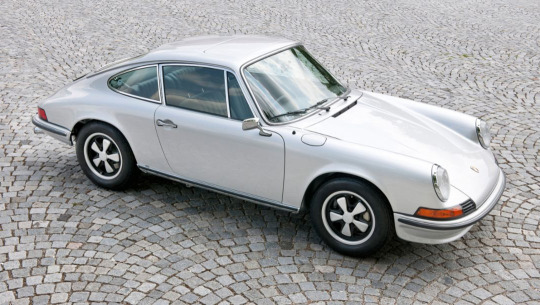
First generation Porsche 911
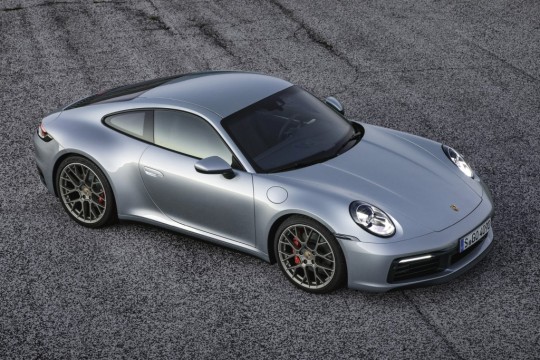
Current generation “992″ Porsche 911
Given its many merits, it doesn’t surprise that the 911 has been beloved by car enthusiasts ever since its original debut so many decades ago.
911 Ruf RSR
Ruf is a specialty car manufacturer that builds high-performance cars using brand-new, unused Porsche chassis. Apart from that, all other parts are made in-house, such as the body, engine, and transmission. With them being made to fit onto a Porsche chassis, the overall appearance of a Ruf car is essentially that of a Porsche, even though it is technically a distinct vehicle. The company does also offer aftermarket performance parts that one can modify their actual Porsche with.
The 1984 Porshce 911 Ruf RSR was built to the specifications of the BTR, a production sports car that was usually built from the ground up by Ruf, although this particular example was modified from an ‘84 911 Carerra 3.2. Initial upgrades included: increased displacement to 3.4 liters, turbocharger, quad-pipe exhaust, improved 5-speed transmission, Ruf wheels, and a number of changes in the interior, such as seats, steering wheel, and instrument cluster. A once tame 911 was transformed into a little supercar thanks to a doubling of horsepower from 200 to 400. And then, courtesy of car tuning firm Alan Johnson Racing, the already beefed-up 911 was fitted with a ludicrous widebody and slantnose kit inspired by the 1979 Porsche 935, one of the most successful of Porsche’s race cars. Nothing cooler than a street car sharing the appearance of a legendary race car from the same brand. After only 2000 miles of combined street and track driving, it received a 3.5 liter engine swap. The new motor blew on its first track drive, after which the car sat unused for nearly 2 decades. It was purchased in 2015 with the intention of restoration, further upgrading, and eventual auctioning. It is now powered by a twin-turbo 3.8-liter flat-six and a new six-speed transmission, along with other handling improvements and new BBS wheels. Current power output is at over 700 horsepower. A long way from the original 200.

1984 Ruf RSR slantnose front

1979 Porsche 935 LeMans racecar with slantnose front

Ruf RSR side

Ruf RSR rear
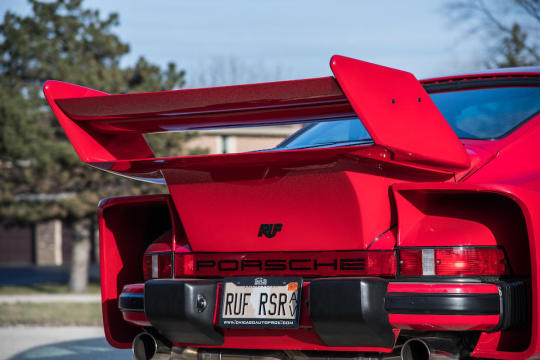
Rear widebody fenders and wing close-up
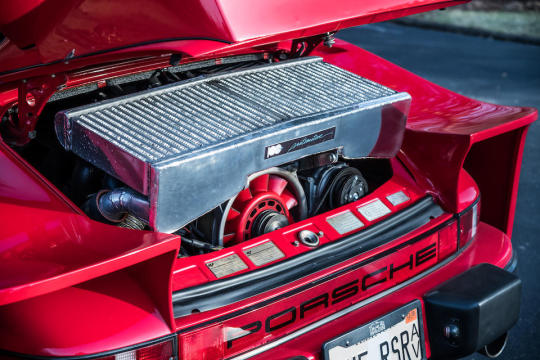
3.8-liter flat-six with visible intercooler
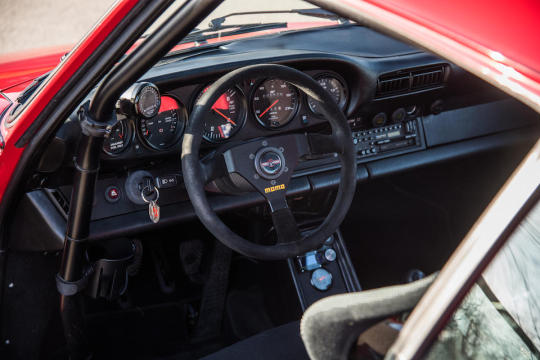
Momo racing wheel
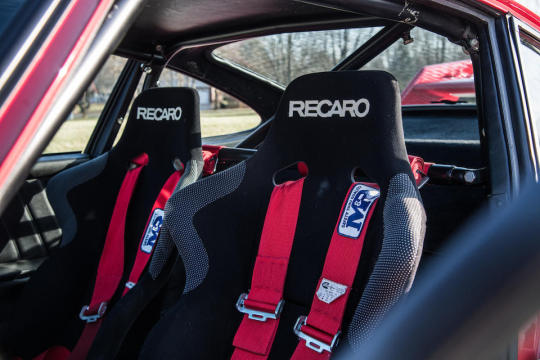
Recaro bucket seats and racing seat belts
Race car looks are great, but what is the Ruf RSR like to drive? Car and Driver had the privilege of test driving this crazy toy, and they were pleased to find that even with its extensive modifications, it achieves a balance of performance and comfort, just like a 911 should: "This modified 911 rides better than some modern sports sedans, cruising beautifully over most surfaces with no harsh impacts or head toss. At a relaxed pace, its manual steering feels alive in your hands and requires less muscle than expected. Its clutch is easily modulated. Start carving corners and its suspension retains its composure with little body roll or unwanted movement. We're told it makes 780 horsepower on race fuel with the boost up, but there isn't enough traction as it is. Nail it from a roll in first gear and it incinerates its big 335/35R-17 rear Michelin Pilot Super Sports like a nitro funny car, spiking its tachometer before you can grab the next gear. Gulping 11.6 psi of boost pressure, the air-cooled 3.8-liter flat-six goes off like a small nuclear device above 4000 rpm, revving quickly and pulling hard to 7000. Otherwise, until you dip into the engine's power and release its fury, it feels pretty much like a stock G-series 911. And it can be used like one."
A widebody, high-horsepower, tire-shredding machine that maintains comfort and everyday drivability will surely be a special treat not only for the next owner, but also for any passerby that gets a chance to gawk at this spectacle of a Porsche 911.
#Porsche#911#Porsche911#Ruf#RufRSR#germancar#sportscar#performancecar#classiccar#vintagecar#carblog#autoblog#carlifestyle#carlove#carlife#bestcars#amazingcars#carnews#amazingcars247#carenthusiast#carpassion#carswithoutlimits
0 notes
Text
Canoo MPDV: A Delivery Van with Futuristic Flair and Unique Utility

Canoo is a recently formed car manufacturer that produces affordable electric commercial vehicles. The Canoo MPDV (Multi-Purpose Delivery Vehicle) is intended for professionals seeking to expand their business with a workhorse electric van to fulfill various commercial duties. Typically, a delivery van is not the type of vehicle that you would expect to catch your eye, as they tend to blend in quite well with ordinary traffic. The MPDV begs to differ, breaking the attention barrier with its strikingly futuristic and geometric design that brings to mind the Tesla Cybertruck. In addition to its novel look, it also boasts one-of-a-kind utility in the form of a modular body that can be customized exactly to one’s business needs.
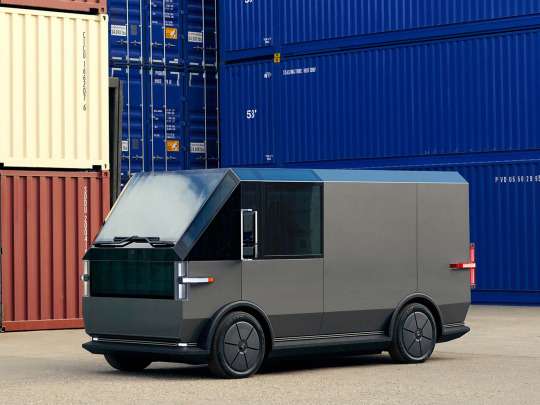
Canoo MPDV
Utility
Utilitarian and modular, the MPDV seeks to provide for the needs of business owners of all types. It has a plethora of adjustable and optional features that make it notably serviceable. This separates it from other delivery vans, with it being applicable to a wide variety of business types, in addition to delivery. From food truck, to mobile cafe, mobile retail store, mobile locker, and even a mobile marketplace that sells fresh produce, the possibilities are endless. When configuring your MPDV, you can choose from features such as: adjustable shelving, hanging storage, built-in dolly and loading ramp, temperature-controlled cabin, built-in canopy, retractable exterior tables and chairs, locker system, sliding or hinged rear door, on-board 125V/240V charging station, and more. You can even handpick to have the steering wheel placed in an exact position to your liking, unrestricted by a physical steering column, since it is all connected through the onboard computer. The body comes in various sizes, but the chassis is the same for all versions of the MPDV, with the overhangs being adjustable in size and length at the factory. The payload capacity ranges from 1300 to 1900 lb, depending on the power of the fitted batteries.
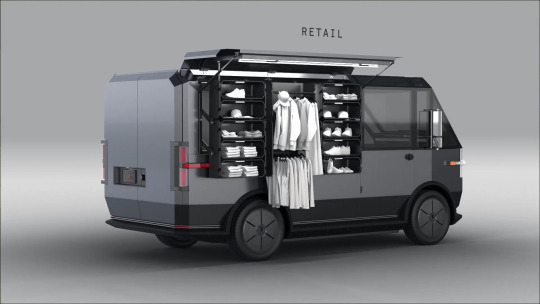
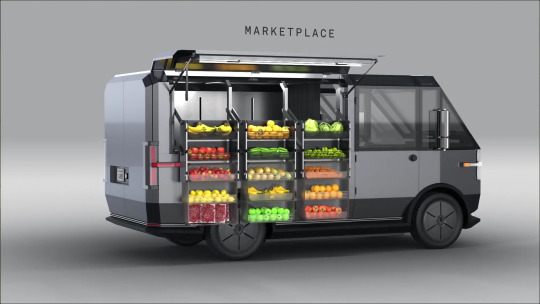
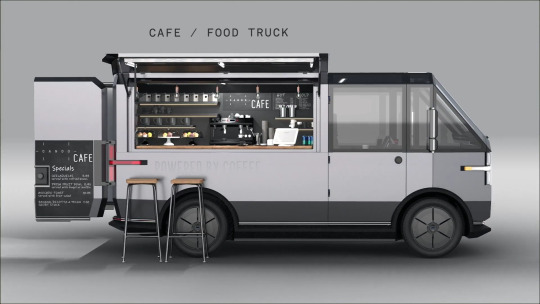



Examples of various business use-cases

MPDV size options
Design
The MPDV’s most prominent exterior features are its large flat surfaces resembling sheet metal, sharp connecting lines and angles, rugged boxiness, and futuristic line lighting elements. The interior features a sleek and minimalist driver’s cabin that consists only of the essential elements necessary for driving. Instead of a typically large and rectangular infotainment screen, an app shows all relevant information regarding car-user preferences and road data that is accessible through a phone, which can be propped up in the side armrest like a mini infotainment display.
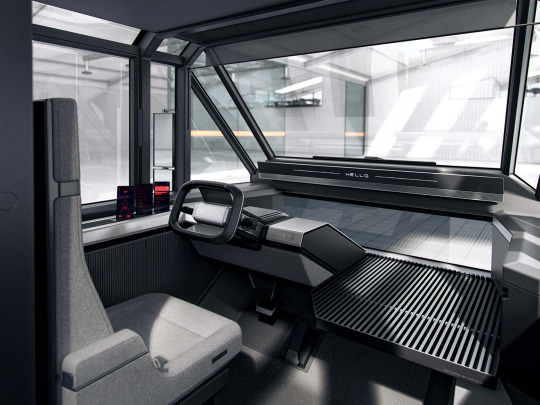
MPDV interior, with visible front storage shelf and openable lower glass pane
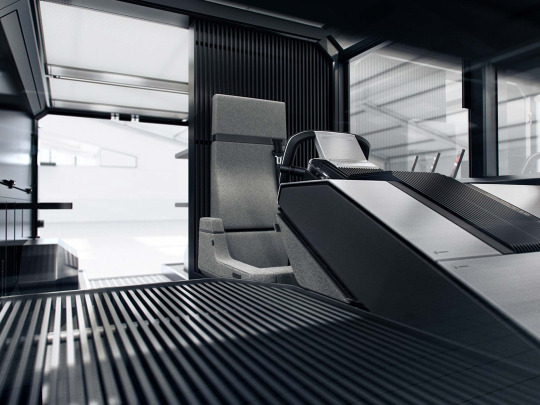
Interior front shelf view

Interior top view

Steering wheel close-up
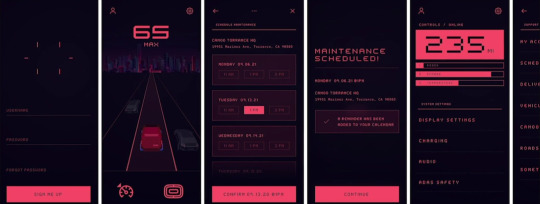
Canoo smartphone infotainment app, interface design
Branding Space
The flat exterior panels make for an excellent space to advertise your brand. Large and bold brand designs will benefit from the real estate that the outer surfaces provide.

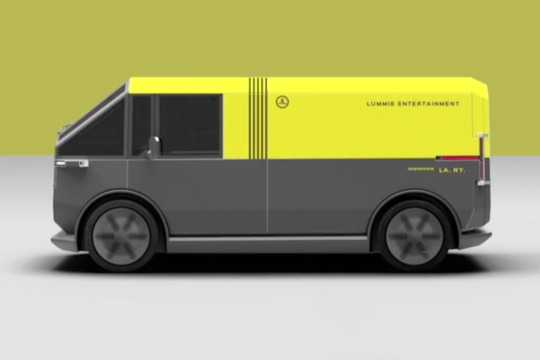

Exterior branding visualizations
Affordability
According to a press release, Canoo estimates that the MPDV will provide class-leading cost of ownership improvements over current best selling delivery vehicles of between “$50,000 to $80,000 on return on capital over six to seven years, depending on the use case.” This projection is based on expected low maintenance costs as a result of it being electric, overall durability, and its use of a flat chassis that allows for increased cargo volume on a smaller platform, which aids in electric range efficiency. Considering these estimates, vehicle characteristics, and the reasonable starting price of $33,000, the MPDV will likely make for an overall highly cost-effective vehicle that will be cheap and easy to maintain.
Final Thoughts
Affordable, modular, versatile and electric. The Canoo MPDV is an innovation in the world of delivery vans that makes total sense. Its lucrative for the company, since one vehicle can be sold to a wide variety of business owners, and convenient for the consumer, since one can customize and configure their MPDV for the exact needs of their business. A pioneer in technology and functionality, the MPDV sets a bold new standard of what a delivery van can be.
#Canoo#MPDV#electriccar#newcar#carnews#deliveryvan#electricvan#carlove#carenthusiast#carpassion#carblog#autoblog#carblogging#carlifestyle
11 notes
·
View notes
Text
McLaren Elva: No Windshield, No Limits

With about a dozen different models in McLaren’s lineup, and with unifying design approaches between them, it helps that the brand utilizes a neat system of categories to differentiate its offerings by performance, price and prestige. The new McLaren Elva resides within the “Ultimate Series,” which features the most exclusive and high-performance of McLaren supercars. Although, with or without categorization, thanks to the Elva’s unique omission of a front windshield, it likely won’t ever be mistaken for any other McLaren model.
Active Air Management System
The key defining feature of the absence of a front windshield classifies the Elva as a “speedster.” But removing such a critical part in the name of an open-air joy ride is surely to be uncomfortable for the occupants. McLaren took this question seriously and engineered a clever solution that redirects some of the onrushing air upwards and forwards through the lower air intake and hood vent, pushing the rest of it up and over the cockpit. This creates a bubble of stable, steady air where the occupants sit, with all the fast moving air flying above. A special flap extends from the hood at high speeds that amplifies this effect.

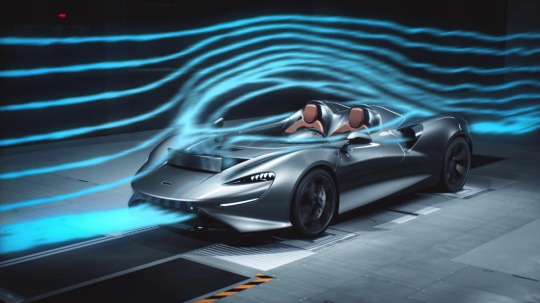
Visualization of the Active Air Management System
Design
The Elva’s exceptionally smooth design captivates the eye and inspires the imagination like no other. Light flows effortlessly across the body, particularly thanks to its voluptuously sculpted side body line, seamlessly connecting the front to the rear. The silky body leaves one without a clear sense of where each body panel begins and ends, as if the entire car is a one-piece construction. The open-air interior further accentuates this look. It doesn't appear as a separate part of the car. But rather, the interior and exterior are married in unison, without an obvious separation between the two: the hood connects directly to the top of the dashboard and gauge cluster, the doors flow over into the interior, and the top of the body moves down in between the seats. These features elevate the immersive sense that the interior is encased by the body itself. As with all McLaren cars, the Elva follows the idea of function over form, and it might just be the best example of it. Its fluid design that closely connects interior to exterior is more than just an appearance, it serves to better connect the driver to the car, and thus provide as pure and unfiltered of a driving experience as possible.

Elva in “Kinetic” configuration

Elva side view
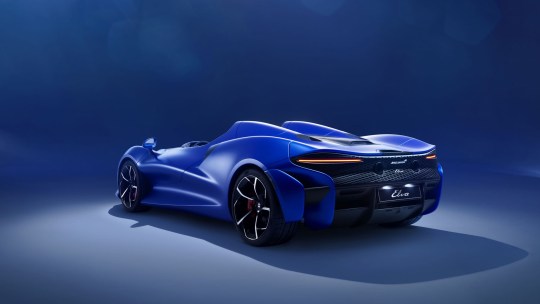
Elva rear
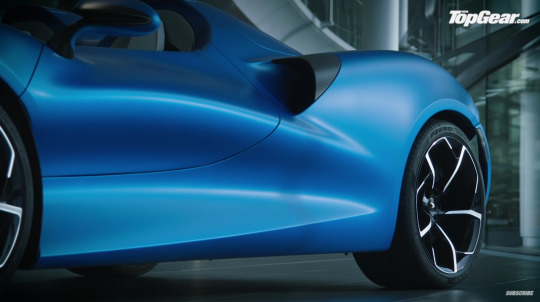
Close-up of the side body line
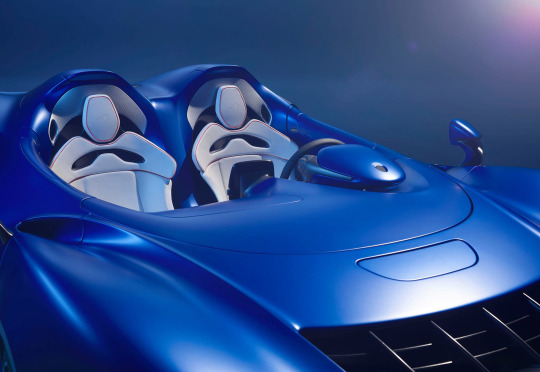
Merging of the exterior/interior close-up

Elva interior
Motorsport Heritage
The Elva pays homage to the first production McLaren race car, the 60’s McLaren-Elva M1A Mk I. Based on a prototype model designed by racing driver Bruce McLaren, the production version was built through a joint effort between McLaren Racing Ltd and Elva Cars Ltd, for financial and practical purposes. The partnership produced three models in total, the M1A, M1B and M1C, with each being an improvement over the former. “Elva” is derived from Elle Va in French, meaning “she goes,” which summarizes the handling nature of the classic and new McLaren Elva: confident, composed and quick through the corners.

Classic McLaren-Elva M1A next to new McLaren Elva
Performance
Speedster by design, the Elva puts the feeling of the drive first over everything else. A super lightweight body, the lightest of any McLaren in fact, a punchy 4.0-liter twin-turbo V8, meticulously engineered aerodynamics, fine-tuned suspension and sublime steering response are all key in achieving the goal of distinct and exciting handling dynamics. Sheer speed is not the focus here, and although it is still a properly fast car, McLaren does offer faster models in terms of top speed and acceleration.
Customization Options
McLaren Special Operations (MSO) is a division of the brand that caters to the unique tastes of individual buyers by offering exclusive customization options. With only 249 units planned to be built, and each priced at $1.7 million, the Elva is about as posh as a car can get. But even with such a limited quantity, repetition of color combinations might still occur. And you certainly wouldn’t want your Elva to look like someone else’s Elva. After all, exclusivity is key here. This is where MSO comes into the picture. As an Elva buyer, whatever style your heart desires, you can have. But for those who don’t go down the crazy, custom MSO route, McLaren revealed the available “preset” color combinations. Among those is an M1A theme by MSO that features a livery inspired by the classic that started it all. Pictured below are a handful of those configurations:

Elva “Purity”

Elva “Equinox”

Elva “Electrify”
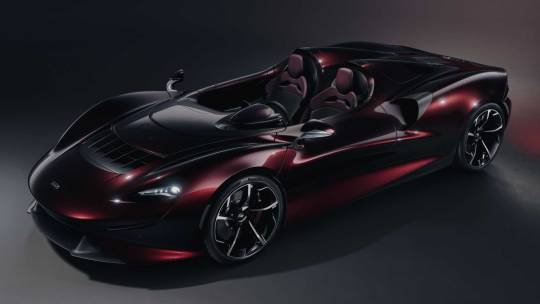
Elva “Luxe”
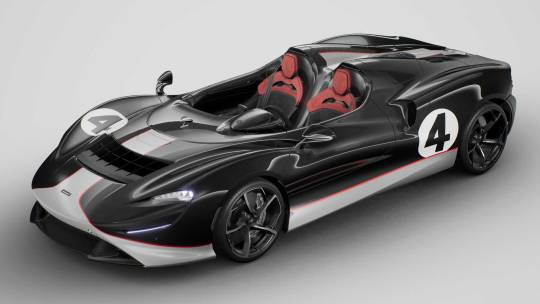
Elva M1A theme
An open-air, handling-focused car without a front windshield sounds about as fun as it can get. And with McLaren’s sharp attention to detail, the Elva is easily one of the most precisely designed speedsters to date, built for a pure driving experience that is finely catered to the senses.
#McLaren#Elva#McLarenElva#supercar#hypercar#luxurycar#performancecar#speedster#fastcar#carblog#carblogging#autoblog#amazingcars#amazingcars247#bestcars#carnews#newcar#expensivecar#carlifestyle#carenthusiast#carlife#carlove
0 notes
Text
Toyota GR Yaris: The Ultimate Pocket Rocket

Rally racing is one of the most intense and dangerous forms of motorsport out there. Breakneck speeds on cliff-side dirt roads, a co-driver yelling directions over the deafening roar of a straight pipe exhaust and unpredictable road and weather conditions are all potential walls to remaining focused and retaining control of the vehicle. Everything needs to be executed immaculately. All in what is essentially a modified street car. It is a true test of pure driver skill and driver/co-driver teamwork.
Official rally events have a strict set of rules and regulations to ensure a fair competition. One of the universal requirements is that the competing vehicle is based on a production street car in the real world with at least 25,000 built units. Frequently rally-converted cars include the Ford Focus/Fiesta, Subaru WRX and Volkswagen Golf/Polo. This is where the 2021 GR Yaris comes into the picture. It is a high-performance hot hatch, designed to be the perfect platform for rally racing. The end goal for Toyota is to have a new vehicle to compete with in the World Rally Championship, by converting a GR Yaris into WRC (world rally car) specification, thus replacing the current Yaris WRC. To do so, Toyota first needs to build and sell the GR Yaris to the public as a street car.

Current Yaris WRC used for competing in the World Rally Championship
2021 GR Yaris
Performance
GR, which stands for Gazoo Racing, is Toyota’s in-house performance division. While most offerings from Gazoo Racing are essentially modified versions of currently existing models, enhanced with various performance parts to improve the driving experience, the GR Yaris is a different car from a standard Yaris at the core. Its chassis is a hybrid between that of a regular Yaris (as sold in Europe, Japan and Australia- not the re-badged Mazda 2 “Yaris” sold in the US) and of a Corolla/C-HR. This new platform features more weld points and structural adhesive, rendering the GR Yaris as more than your average performance-enhanced hatchback.
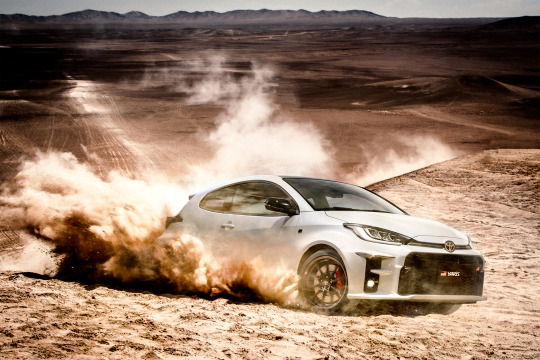
GR Yaris racing through sand and gravel
Aside from a new chassis, the GR Yaris is longer, wider, lower and more lightweight than a standard Yaris. And then there’s the engine. Under the hood is now officially the world’s most powerful three cylinder engine: a turbo 1.6 liter that makes up to 257 horsepower and 265 lb-ft of torque. Linked to the engine is a standard six-speed manual transmission, and an advanced 4WD system that can modulate torque delivery between the front and rear half of the car. It can be front-wheel-biased, 50/50 balanced, or rear-wheel-biased. All depends on the type of thrill you are seeking in the moment. An optional Circuit Pack adds performance suspension, big brake rotors and calipers, lightweight wheels and high-grip tires to compliment the power and structural rigidity.
Test Drive Impressions
Test drivers at Top Gear took the GR Yaris out for a spin, and had nothing but praise for its driving dynamics: “It’s a short, broad, stiff car. The heavily strengthened bodyshell means zero creaks and rattles and gives the suspension a rigid central core to work from. The GR Yaris doesn’t feel anything like a standard Yaris when you get in. It feels robust... small and light. With punchy dynamics and a gutsy motor, it’s a deeply compelling machine... an addictive experience. The best Toyota we’ve ever driven.”
Motor Trend also had the chance to experience the GR Yaris, and the drivers there were left with a positive impression as well: “The GR Yaris feels like a car developed by race engineers. The brakes are superb, the steering is accurate and well weighted. But what’s most impressive is how smoothly the GR Yaris gets into corners… and how concisely it tracks through them. You can go to power much earlier than in any of its front- or even all-wheel-drive rivals and let the differentials do their thing. Just steer where you want to go, and the GR Yaris will go there. There isn't a hot hatch on the planet that gets out of corners as quickly and confidently as this Toyota.”
Design
The exterior design looks very aggressive. Inward slanted headlights and a big rectangular grille make for an angry face that would certainly catch attention on the road. The fenders are nicely pronounced, with the two door configuration helping make way for beautifully wide rear fenders, effectively giving it a widebody look. The hood has a bulge in the middle, further accentuating it as a performance car. Overall, the GR Yaris looks like a proper performance hatchback, shamelessly boasting its motorsport roots.

GR Yaris aggressive front

GR Yaris side

Side close-up

GR Yaris rear

Close-up of the wide rear fenders
The interior is simple, to-the-point, and driver-focused. A well-bolstered leather steering wheel, round leather gear-shift knob, physical e-brake, aluminum pedals, suede bucket seats and a simple, distraction-free dashboard all make for an interior that looks ready to provide for the hooning needs of a car enthusiast.
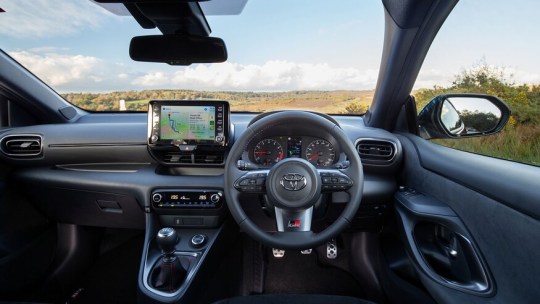
GR Yaris interior

Steering wheel close-up
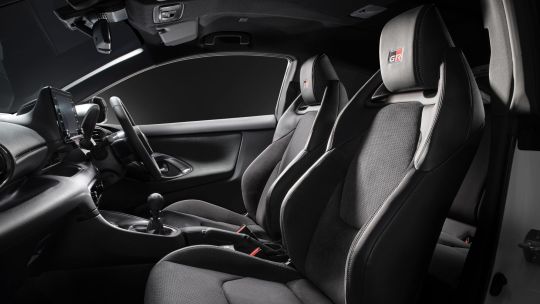
Suede bucket seats
Conclusion
From the experiences of the test drivers at Top Gear and Motor Trend, one thing is clear: The GR Yaris is a genuine thrill machine. It can accelerate from 0-60 mph in 5.5 seconds and has a top speed of 143 mph, which are decent performance numbers, but the numbers don’t matter so much with a car like this. What matters most is the feeling of the driving experience. With a small, compact performance hatchback, you usually get a well-controlled, agile and responsive ride that feels faster than it actually is. The GR Yaris, with it being a proper hot hatch, is built to induce a total adrenaline rush, and according to the drivers at Motor Trend, it “feels quicker” than its actual acceleration and top speed. They explain this as “a function of size… you simply don't expect a car smaller than a Corolla to deliver the neck-snapping launch and determined acceleration of the GR Yaris.”
Unfortunately, the GR Yaris will not be sold in the US, but the 86 and Supra are both available, and are heart-pounding enthusiast’s cars as well. When converted from British Pounds, the starting price is around $40,000 and the Circuit Pack model is around $45,000.
With its rally roots, the GR Yaris has a robust structure that is capable of traversing at speed both on and off-road. The world is for the taking in Toyota’s new hot hatch.
#Toyota#Yaris#ToyotaYaris#GRYaris#performancecar#fastcar#funcar#hothatch#hatchback#carblog#autoblog#carblogging#carenthusiast#carlove#lovecars#japanesecar#bestcars#amazingcars247#carlifestyle#newcar#carnews#amazingcars#carpassion
0 notes
Text
2022 Genesis GV70: Gracefully Gorgeous

Genesis is a recently formed car brand that emerged from Hyundai in 2015. Since then, the new marque has developed three sedans and two SUVs. As a builder of premium performance luxury vehicles, Genesis caters to a different crowd of buyers than Hyundai, hence the brand separation. The Genesis logo consists of a shield with “Genesis” written in the center and two wings that extend to either side, representing speed and luxury, similar to the logos of other luxury brands such as Bentley and Aston Martin.
The 2022 Genesis GV70, a compact SUV, is the latest addition to the Genesis lineup. As with other Genesis cars, it boasts their unique design identity called Athletic Elegance.
Athletic Elegance
As the name implies, Athletic Elegance is about achieving a balance between sportiness and refinement in design. According to Jung MyungJin, Senior Researcher of Genesis Exterior Design Team, the core aspects of Athletic Elegance include “sublime proportionality and sophistication of form.”
There are five key design elements to Athletic Elegance:
Crest Grille- inspired by the crest of the Genesis emblem.
Quad headlights and taillights- inspired by the wings of the Genesis emblem.
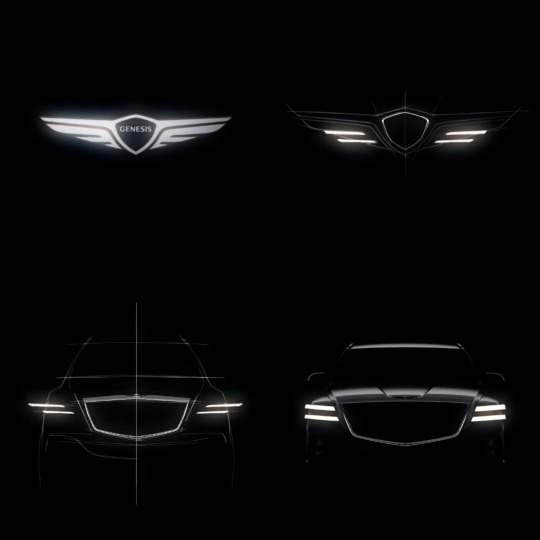
Visualization of the Genesis emblem transforming into the Crest Grille and Quad Lights
Parabolic Line- a single line that stretches across the side-profile and moves elegantly downwards, inspired by classic cars, helping to maintain a simple and pure look.
“Beauty of White Space”- inspired by traditional South Korean architectural design, can be seen in the interior. The interior of a Genesis is meant to evoke feelings of comfort, spaciousness and openness. Kang YeonJi, interior designer of the Genesis GV80 (a larger SUV than the GV70), described a Genesis interior as “cozy, homey, and luxurious... to make passengers feel as if they are resting in a lounge”
G-Matrix pattern- parallel and perpendicular lines that create a geometric pattern. This pattern can be seen all throughout a Genesis car, inside and out.
Exterior
Front
The front of the GV70 features the signature Crest Grille and Quad headlights, inspired by the Genesis emblem, and the G-Matrix pattern, as seen in the grille and lower air inlets. It is very unique to have a car's emblem define the front fascia design, and the GV70 executes it beautifully. It looks tough and sporty, yet luxurious and refined. On the hood we can see two lines in the center that begin at the badge and extend all the way to the top end of the hood, placing emphasis on the wings of the badge, further accentuating the key role of the Genesis emblem in the overall design. Pictured below are two versions of the GV70, with the red being the sport model, differentiated at the front through dark chrome around the grille, blacked-out lower air intake and larger side air vents.
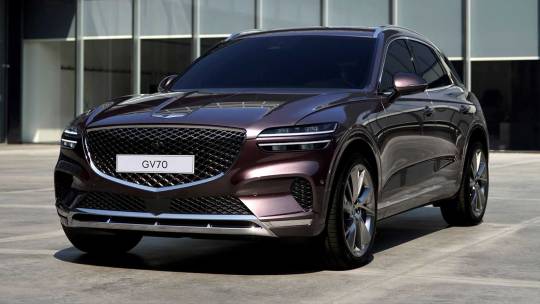
2022 Genesis GV70

GV70 Sport
Side
The side profile features the main Parabolic Line, which stretches across the entirety of the side and has a dramatic slope downwards as it moves from the front to the rear of the car, seamlessly connecting the headlights to the taillights. To occupy the space left behind from the downward slope, a short rear-quarter panel line (called Athletic Power Line by Genesis) sits neatly in between the Parabolic Line and the windows. Personally, I am a fan of this body line setup, as I think it looks pleasantly smooth to the eye and evokes a sense of luxury. Additionally, around the windows is a chrome embellishment that interestingly connects to the rear-quarter window by sloping downward from the top of the other windows. This visually separates the c-pillar from the roof and leads into a rear-quarter window that has smoothly rounded edges. In the sport model, the chrome line at the bottom of the door is blacked-out and the wheels are different, boasting a five-spoke design with the G-Matrix pattern on the spokes.
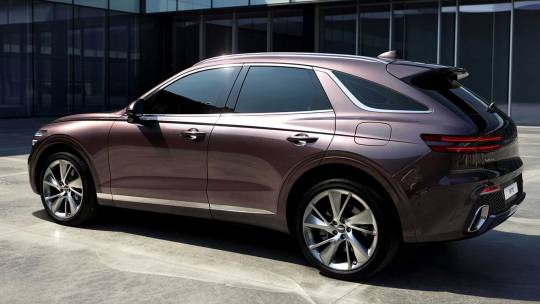
GV70 side profile
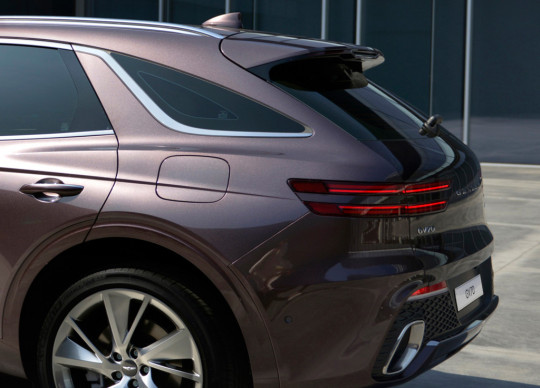
Rear-quarter close-up

GV70 Sport side profile
Rear
The rear also features Quad lights, as part of the Athletic Elegance design philosophy, with Genesis letters situated in between. That is about it for the trunk: lights and badge. It looks simple, clean and easy on the eyes. Moving down to the bumper, we have the license plate mounting area, vertical exhaust pipes, G-Matrix pattern, and a body-colored diffuser that creates a wrap-around effect, encasing the black portion of the bumper. A horizontal body line that sits above the black portion visually separates the lower part of the rear from the upper, further helping to maintain a clean look. The sport model has circular tailpipes and a slightly wider diffuser that extends more to the side.

GV70 rear
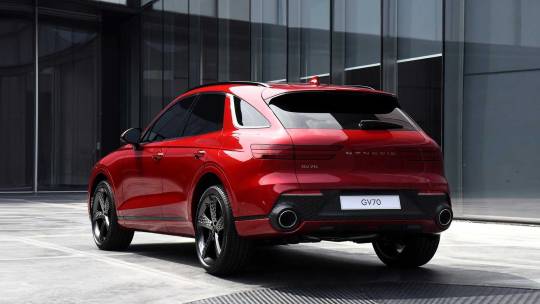
GV70 Sport rear
Interior
The interior looks spacious, comfortable and luxurious. The dashboard is wide and linear, with sleek air vents that are well disguised as a simple horizontal line spanning the width of the dash. The climate control buttons are encased in an oval that expands to the opposing side of the steering wheel, creating a neat area for all the buttons on the dash.
Optional Nappa quilted leather seats come in a variety of colors, such as burgundy, dark green, beige, brown and red, with contrast stitching and even color-matched seat belts. The optional mood lighting in the doors and center armrest is easily the most unique I've ever seen. A series of angular wave lines provide subtle and elegant interior mood lighting that looks more natural and organic than a standard straight line of lighting, as seen frequently in other cars that offer it. In the sport model you have carbon fiber panels in place of the Wave Line mood lighting, as part of the more sporty nature of it.
The two versions have different steering wheel designs. The regular model has an oval-shaped center area to the wheel, with open spaces on the top and bottom, encouraging a relaxed and comfortable grip. The sport model features a three-spoke wheel that is slimmer in the center and encourages a more performance-focused 9 and 3 o'clock grip.
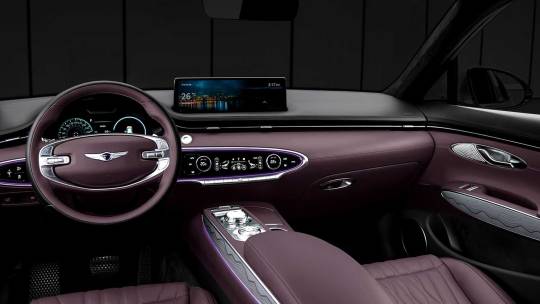
GV70 burgundy interior
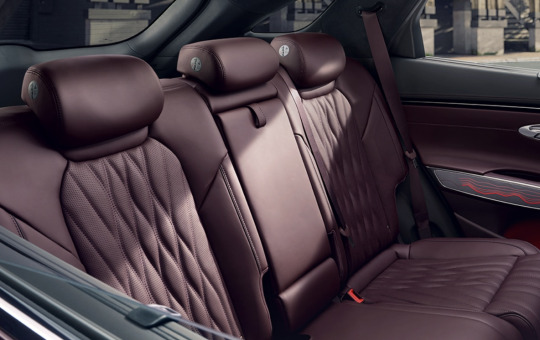
Quilted burgundy Nappa leather seats

Wave Line mood lighting

GV70 Sport interior

Sport model quilted red Nappa leather seats
Technology
The 2022 GV70 has a number of cool, noteworthy tech features. You can register your fingerprint through the infotainment system, and use it to unlock and start the car without a key fob via fingerprint touch-pads. You can even pay for gas and parking through the infotainment system using your fingerprint, through a service called Genesis Car Pay. The digital gauge cluster utilizes cameras to track the driver’s eye movements in order to subtly adjust the information on display for optimal viewing from any angle. The navigational knob used for accessing the infotainment system has a touch-pad that recognizes handwriting, so you can spell out your destination or a name in your contacts, without needing to press virtual buttons on the screen. And finally, an augmented reality navigation feature shows the road ahead through the infotainment screen as you drive, and displays overlaid road and navigational data.
Performance
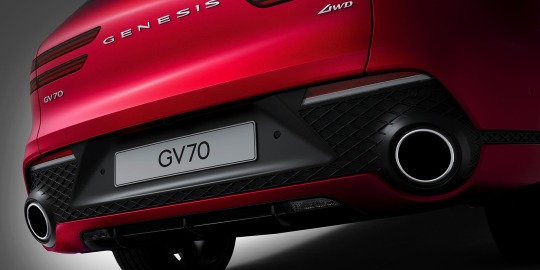
GV70 Sport circular tailpipes and G-Matrix bumper pattern
The sporty looks of the GV70 wouldn’t mean much if they weren’t matched with sporty performance. Three engine options will be available for the GV70: A turbo 2.5 liter inline-four with 300 horsepower and 311 lb-ft of torque, a twin-turbo 3.5 liter V6 with 375 horsepower and 391 lb-ft of torque, and a turbo 2.2 liter inline-four diesel with 207 horsepower and 325 lb-ft of torque. The diesel will be meant more for efficiency, as its power numbers likely won’t provide outstanding performance, but the other two options sound impressive in their power figures. In the handling department, the GV70 will have dynamically adjusting suspension that can alter its damping force based on current road conditions, as recognized by a front camera, to provide a smooth and controlled ride. An electronic limited slip differential can control the power delivery to each drive wheel separately, improving vehicle control in various road and driving conditions. A launch control feature can propel the GV70 from 0 to 60 mph in 5.1 seconds, when equipped with the twin-turbo V6. And, a drive mode selector features Sport and Sport + as options, that adjust power delivery and handling responsiveness characteristics for a more performance-focused experience.
Final Thoughts
The 2022 Genesis GV70 is a stunning machine, inside and out. Its exterior design is sleek and sporty, with unique features such as the Crest Grille, Quad Lamps and Parabolic Line that create a strong Genesis brand identity. The interior is equally pleasing with its high grade materials, minimalist dashboard design and interesting details such as the Wave Line mood lighting.
The GV70 stands out as a luxury SUV, all thanks to the fresh design approaches of Genesis that help differentiate the brand from the crowd.
#Genesis#GV70#GenesisGV70#suv#crossover#luxurycar#performancecar#performancesuv#newcar#upcomingcar#carnews#carblog#autoblog#carblogging#amazingcars247#bestcars#carlove#carenthusiast#carpassion#lovecars#koreancar
0 notes
Text
Toyota Mirai: From Ugly Duckling to Sumptuous Swan
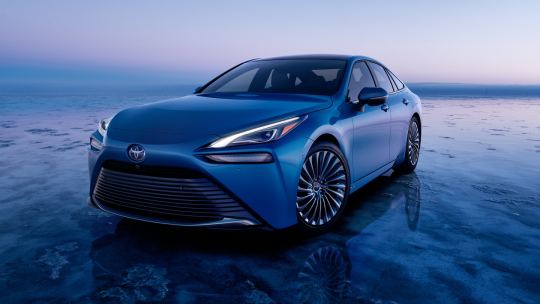
The 2021 Toyota Mirai is one of the most dramatic car transformations of late. The design of the first generation Mirai was an eye-sore of awkward proportions and ill-fitted visual elements. I could never have imagined calling it a beautiful car before, but with the total redesign of the second generation Mirai, it is now as much of a stunner in looks as it is in powertrain technology.
Exterior
It seems as if the design team at Toyota went back to the drawing board with a clean slate. The second generation Mirai shares no resemblance with the original model, featuring a sleek and well-flowing design that shamelessly boasts luxurious sport sedan proportions.
Front
The front of the 2021 Mirai looks very clean. Gone are the gaping side air inlets that disproportionately dominated the front fascia of the outgoing model, and instead we have a wide and sleek front grille that is easy on the eyes. The slim headlights fit well with the turn signals underneath, with the two looking like a one-piece lighting unit. The headlights extend alongside the hood, accentuating a sense of visual length at the front.
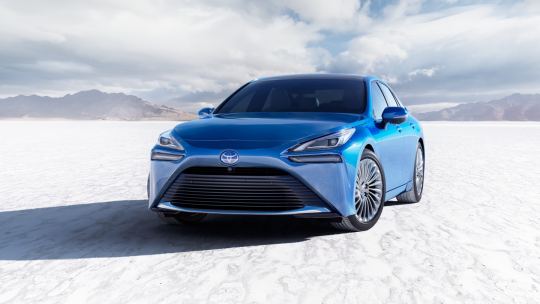
2021 Toyota Mirai prototype

First-gen Mirai
Side
The new Mirai is several inches larger in length, width, and wheelbase, with a lower roofline by several inches as well. My favorite aspect of the side profile is the luxuriously long hood, which is a stark contrast from the short and stubby nose of the outgoing model. Overall, the long front, short rear, and low roofline of the 2021 model is a huge improvement in proportion over the outgoing model, looking much more visually balanced.
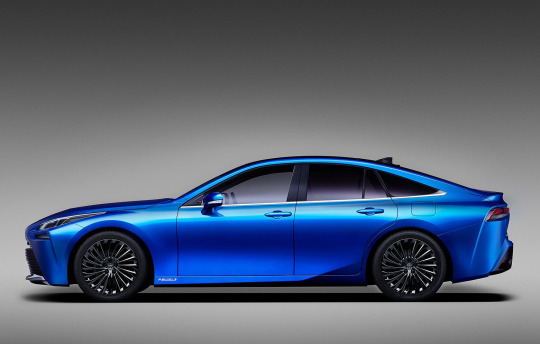
2021 Mirai prototype
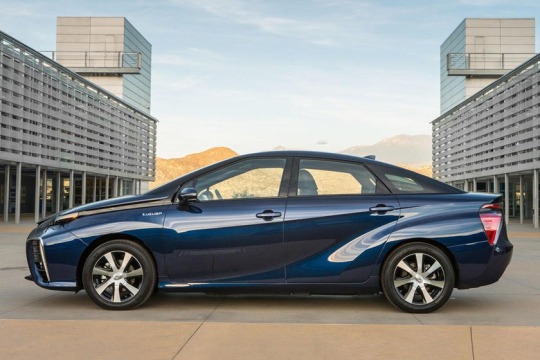
First-gen Mirai
Rear
Moving onto the rear, and we see yet again a clean and sleek redesign. Full light-bar taillights catch the eye’s attention, without the distracting triangular lights underneath, as seen on the old model. There is a good sense of flow between the bumper and the trunk, thanks to a continuous line that starts at one edge of the bumper, moves all the way up to the center of the trunk, and then back down to the opposite edge of the bumper.

2021 Mirai prototype
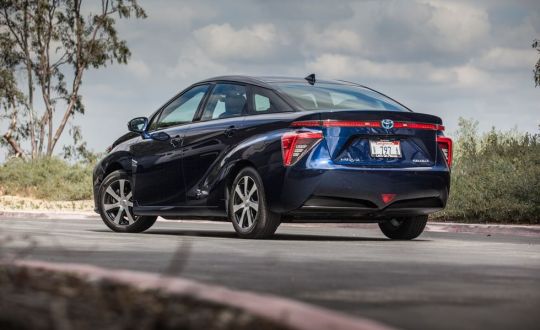
First-gen Mirai
Interior
The interior of the new model looks significantly more upscale, thanks to more premium-grade materials, ambient lighting, decorative bronze lines and an optional two-tone white and brown leather configuration. It also features a more linear and driver-focused design. The digital gauge cluster is now in the center, the main infotainment screen is tilted toward the driver, and a panel with vents and buttons sits opposite to the infotainment screen on the other side of the steering wheel, mirroring its position. This creates a cockpit-like setup that could help better focus one’s attention toward the center of the road ahead. Overall, the new interior looks like something out of a Lexus, a big step up from the very Prius-esque interior of the older model.

2021 interior two-tone
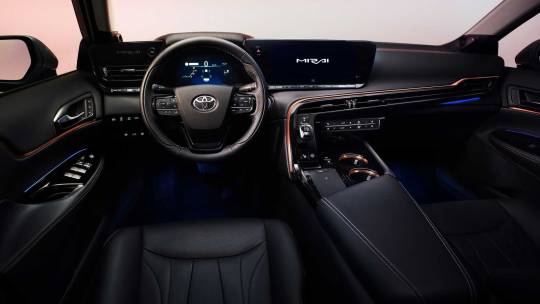
2021 interior black

First-gen interior two-tone
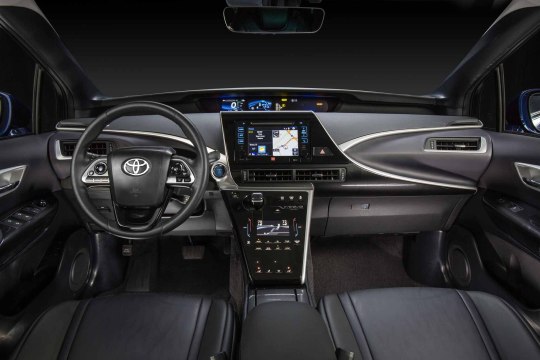
First-gen interior black
Fuel Cell Technology
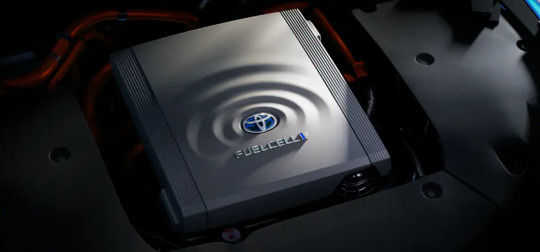
The Mirai is a hydrogen fuel cell vehicle. It fills up with hydrogen, which is then stored in a pressurized tank before entering the fuel cell, a special chamber where an electrochemical reaction occurs between hydrogen and oxygen. This generates electricity, which then powers an electric motor, propelling the car. There is a byproduct from this reaction, and that is water. In fact there is a tailpipe underneath the Mirai that expels water when necessary, with even a button inside that allows the driver to expel water on command.
Final Thoughts
The 2021 Mirai is a beautiful car without question. Classic sport sedan proportions give it a sexy and luxurious look that is unmatched by the old model. The interior is equally compelling, with a very Lexus-like design that is both modern and driver-focused. When it comes to the hydrogen fuel cell technology that powers the Mirai, its main advantage is the fact that it can be filled up as quickly and easily as a gasoline-powered vehicle. Otherwise, what directly powers a hydrogen fuel cell vehicle is an electric motor, just like with a standard electric vehicle. The difference lies in how you obtain the electricity. Either through a direct charge, or an electrochemical hydrogen-oxygen reaction.
Currently, the Mirai is only sold in select markets, which include Japan, California, Hawaii, parts of Canada, and Western Europe. The infrastructure for hydrogen stations is growing, but it is far behind the rapidly expanding electric charging network. Taking California as an example, there are currently only 43 public hydrogen refueling stations throughout the entire state, compared to almost 7,000 electric charging stations. If you are a resident of the San Francisco Bay Area or the Greater Los Angeles Area, owning a hydrogen fuel cell vehicle shouldn’t be a problem, since that is where most of the stations are concentrated in California. But can hydrogen fuel cell realistically compete against electric on a large scale? For the time being, electric is leading the way in infrastructure and vehicle variety, with virtually no competition from hydrogen fuel cell. If hydrogen fuel cell cars are to seriously challenge electric cars, hydrogen refuel networks need to grow exponentially from where they currently are, and market demand for hydrogen fuel cell cars must increase, so that there is more vehicle variety on offer.
The 2021 Mirai will go on sale next month, with an estimated base price of $64,000 and an expected range of over 400 miles on a single fill-up.
#Toyota#Mirai#hydrogencar#electriccar#greencar#newcar#carnews#carblog#carblogging#autoblog#carswithoutlimits#carlove#lovecars#carenthusiast#carlife#carworld#amazingcars#bestcars#carlifestyle#carfanatics
0 notes
Text
Vision Renndienst Concept: A VW Bus from Porsche

In a new published book titled "Porsche Unseen,” the company unveils previously top-secret concept vehicles. It documents 15 unique design studies from 2005 to 2019, showcasing the unfettered creativity that takes place within Porsche outside of the realm of producing road-going vehicles. Of the various concepts revealed, one caught my eye in particular: Porsche Vision Renndienst.
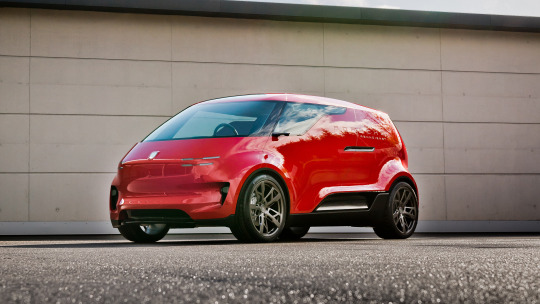
Porsche Vision Renndienst
The Vision Renndienst is a microbus, inspired by the iconic Volkswagen Bus, and infused with Porsche DNA. The exterior design is pure sci-fi galore. Smooth flowing surfaces combined with sharp connecting contours creates visual balance between streamlined and edged. Design details such as the upward narrowing side windows, full light-bar taillights, slim headlights, and Porsche insignia on the side contribute to a futuristic look. With it being a microbus, the overall shape is understandably bubbly, but thanks to short front and rear overhangs and a wheel and tire setup that confidently occupies the wheel wells, the Renndienst looks properly poised.
Sadly there are no photos of the interior, but I can imagine that it is a luxurious and classy cabin, as one would expect from Porsche. The driver sits in the center, and there’s seating for six.
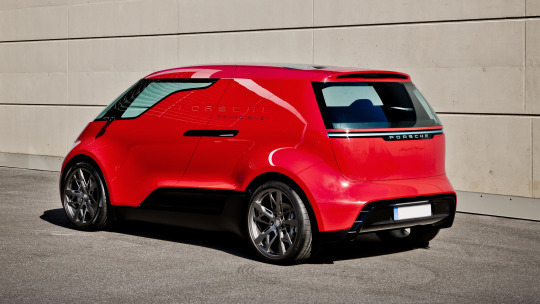
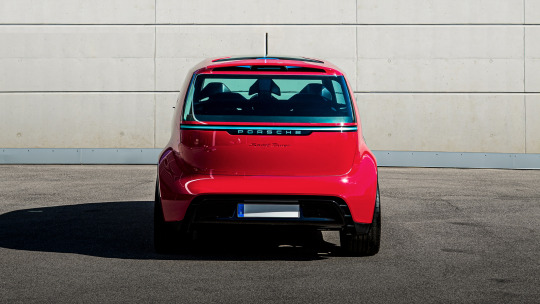

Vision Renndienst next to a classic Volkswagen Type 2 “Bus”
Renndienst means “racing service” in German. This implies that it could be intended as a service vehicle for a racing team, for transport of people and supplies, in addition to being a potential commuter car for families.
While the Vision Renndienst won’t be headed for production, a new German microbus vehicle is soon to be reality thanks to Volkswagen’s I.D. Buzz concept, which is confirmed to begin production in 2022.
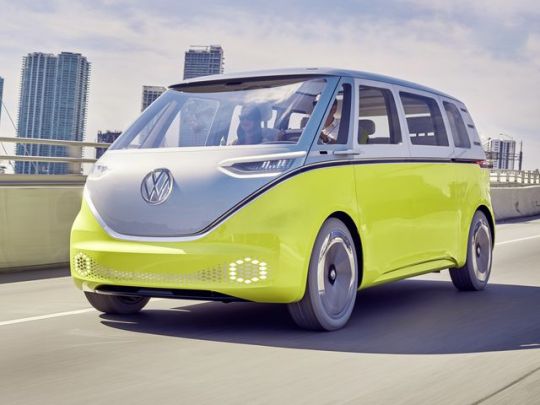
Volkswagen I.D. Buzz Concept

I.D. Buzz Concept
The main attractions of a microbus are comfort and utility. I believe there is a place in the market for a new VW Bus, considering that larger vehicles such as crossovers and SUV’s have taken precedence over sedans and other smaller vehicles, because of their spacious cabins and large storage capacities, which buyers tend to prefer nowadays.
Perhaps in an alternate reality, a Porsche microbus is being sold right along side the Panamera, Macan and Cayenne as part of Porsche’s “utility” lineup. But in our reality, the Vision Renndienst remains a one-off concept that is one of many examples of the kind of creative thinking that takes place within Porsche’s design studio in Weissach, Germany. Vision concepts serve as potential future directions of design and technology, and help propel Porsche into the future.
#Porsche#conceptcar#porscheunseen#carswithoutlimits#carlove#carenthusiast#carblog#carblogging#autoblog#carlifestyle#amazingcars247#bestcars#cardesignworld#carnews#carworld
3 notes
·
View notes
Text
Bugatti Bolide: Pure Racing Pedigree

Bugatti has a reputation of pushing the physical boundaries of car performance to the utmost maximum. Their latest hypercar creation is the Bolide. It is the most powerful and lightweight Bugatti to date, intended for the fastest and purest driving experience the brand has ever offered. It is a stripped-down, essentials-only race car that ditches the amenities and creature comforts of its street sibling, the Chiron, in exchange for a raw and unfiltered racing experience.
Racing Heritage
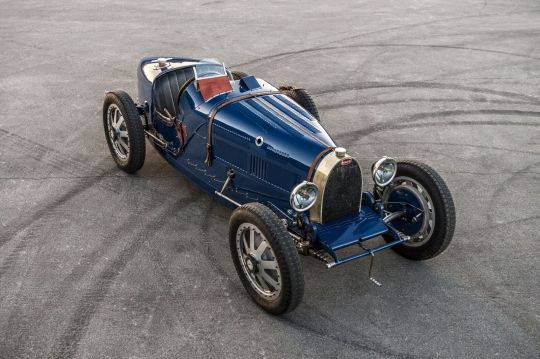
1920′s Bugatti Type 35B
Bugatti’s racing heritage stems from the Type 35 race car. It was a technical achievement on many fronts and became the most successful race car of the time, winning over 2000 races between 1924 and 1930. Depending on the version, the Type 35 produced between 94 and 138 horsepower coming from a straight eight-cylinder engine. It weighed under a ton, at only 1650 lb, thanks to its lightweight body construction. The fastest version (138 horsepower), could achieve a top speed of 133 mph and accelerate from 0-60 mph in under 6 seconds. While these numbers are what you could see in a regular street car today, it was a monumental achievement in car performance back in the day. The Type 35 helped establish the Bugatti marque as a builder of high-performance race cars.
Shortly following the death of the brand's founder, Ettore Bugatti, the original Bugatti brand went out of business in 1956. It wasn’t until the late 80’s that an Italian entrepreneur bought the rights to Bugatti and revived it, followed by the purchase of the marque by Volkswagen Group in 1998. Thus began Bugatti's modern era.
The modern day Bugatti brand produces limited production, high-performance luxury hypercars. As a continuation of its racing heritage, the Bolide is a spiritual successor to the Type 35. In astronomy, a bolide is a large meteor that creates a bright explosion in the atmosphere. In today's French slang, bolide means fast car. There couldn't be a more fitting name for a modern Bugatti race car.
Low Weight, High Power
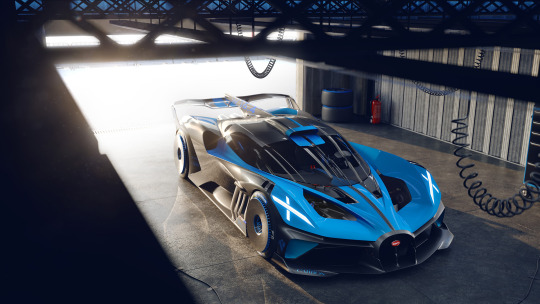
Bugatti Bolide
The Bolide is pure function over form. Every little detail is there for some performance-related purpose. For maximum weight reduction, the body is made out of a combination of carbon fiber, aeronautical stainless steel, and 3D printed materials. Additionally, many of the body components are hollow, further aiding in its low weight. The interior is minimal, with it being stripped down to the essentials only. Inside you will find two seats, a steering wheel, glass center display, a couple of buttons and switches in the center of the dash, and that’s about it. The total weight of the Bolide is 2,733 lb. Bugatti’s current production street car, the Chiron, weighs in at 4,400 lb. That makes the Bolide 1,700 lb lighter, and that is a huge achievement.

Bolide interior
The Bolide features Bugatti’s legendary 8-liter 16-cylinder engine, but with more power and a higher top speed than both the standard Chiron and the Chiron Super Sport 300+. 1,824 horsepower and 1,364 lb-ft of torque propel the Bolide from 0-60 mph in 2.1 seconds and to a top speed of over 310 mph. Performance like this requires a lot of downforce to maintain control. The Bolide can generate up to 5,732 lb of downforce, far exceeding its own physical weight, for maximum grip.
A new innovation in aerodynamics is the “morphable skin” on the roof of the vehicle, which consists of a series of bubbles that inflate at high speeds, redirecting the air down towards the rear wing, effectively reducing air turbulence, drag and lift.

Inflatable roof-scoop bubbles
Xperimental Design
The design of the Bolide features a lot of “X” graphics, from the headlights, to the taillights, and to the visual connections between the different body lines. This is inspired by X-planes, which are US aircraft built to test new aviation technologies and flight aerodynamics. These aircraft are given the “X” nomenclature to designate them as experimental. With the Bolide’s sleek, low profile shape and experimental nature, it is itself a test of new racing technology and aerodynamics. Additionally, the x-shaped headlights are a nod to the common practice of taping up the headlights during a race, to prevent glass headlight covers from breaking up into sharp pieces in the event of a collision.

X-shaped headlights

Taillights forming an x shape

“X” visualization of the top-profile body lines

“X” visualization of the side-profile body lines

Taped-up headlights on a race car
The Bolide might enter a limited production run, but as of now it remains a one-off, proof of concept vehicle that pushes modern Bugatti engineering and performance to the maximum.
#Bugatti#Bolide#BugattiBolide#conceptcar#racecar#fastcar#performancecar#expensivecars#bestcars#amazingcars#carlifestyle#carlove#carenthusiast#carblog#autoblog#cardesignworld#carnews#carworld#carblogging#carswithoutlimits
1 note
·
View note
Text
The Electric Future of Pickup Trucks

Pickup trucks have been around for almost 100 years now, and have since become an ubiquitous vehicle type for hauling, towing, transporting and off-roading. They are generally built tough, are powerful, have spacious cabins, and offer lots of room for storage. But historically speaking, pickups have not presented impressive fuel economy numbers. With rising concerns of climate change and pollution, where does this leave pickup trucks? A pickup needs to have the power and torque necessary to function as a workhorse. Typically this need is met with an internal combustion engine, usually a V6 or V8. Internal combustion engines are practical for all vehicle and driver types, being able to provide either high fuel economy or high horsepower output, depending on how it’s built and tuned. You usually don’t see both aspects in one engine, though. While a relative balance between efficiency and power can be achieved, if you go far into one route, you are usually sacrificing the other. Hybrid systems can present a workaround solution to the issue of fuel efficiency for pickup trucks, but with all the current awareness of our carbon footprint, switching to full electric is the next logical step.
I believe it is safe to say that the future of automobiles is electric. Electric cars have proven themselves better than gas-power in a number of key categories, such as efficiency/range, maintenance costs and performance. Tesla has been the major player in the electric car world for a while now, breaking many barriers and setting new standards. The company has shown to the world that a vehicle can be both highly efficient and provide mind-boggling performance. Sounds like the perfect solution for pickup trucks.
A number of car companies have announced plans for electric pickups, and some have already developed pre-production models. Let’s take a peek into the new and bizarre world of electric pickup trucks, and compare three different models from three distinct brands to the current best selling pickup in the US, the famed Ford F-150.
Tesla Cybertruck

The first of its kind, the Tesla Cybertruck is an electric pickup with an unconventionally sharp and angular design, giving it a one-of-a-kind sci-fi movie look. Its electric power provides extreme efficiency and performance all in one package.

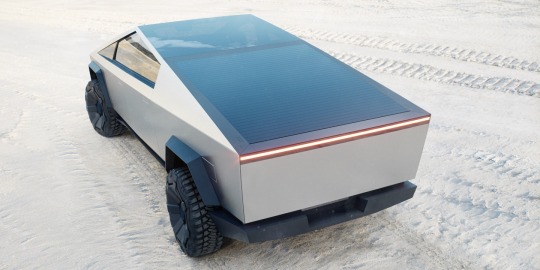
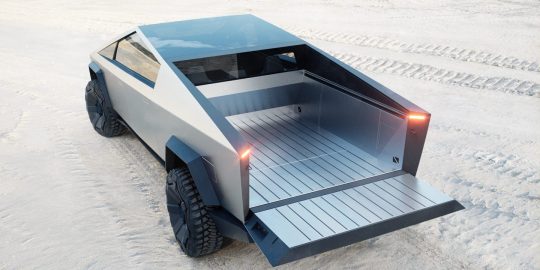

Rivian R1T

Rivian is an electric car manufacturer and competitor to Tesla, with its own electric pickup truck on offer. The R1T features a more conventional exterior design in comparison to the Cybertruck, but one that is futuristic nonetheless, particularly thanks to its full light-bar headlight and taillight setup.
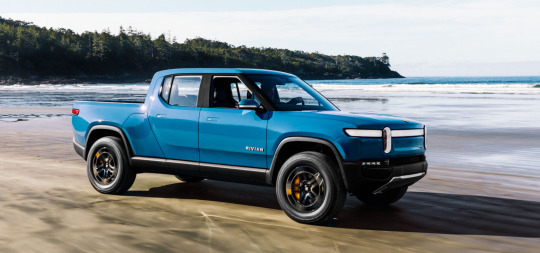
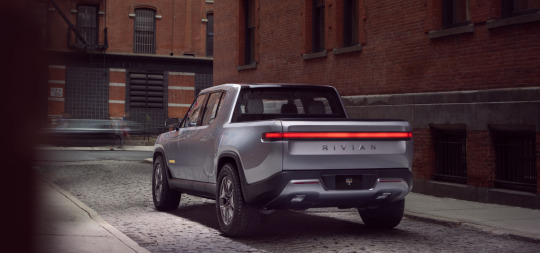

GMC Hummer EV
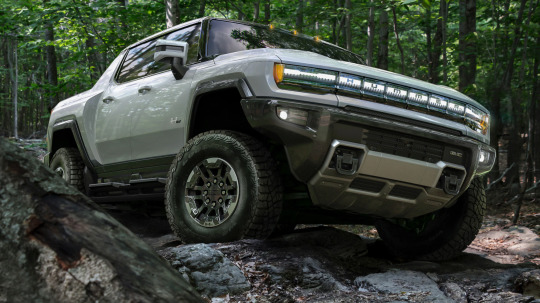
After a decade since the original Hummer brand went out of business, Hummer is back. This time around it's electric and a model within the GMC brand, rather than a brand of its own (both Hummer and GMC are owned by General Motors). Its looks are unmistakably Hummer, with what is essentially a modern rendition of the original Hummer design of the 2000's.
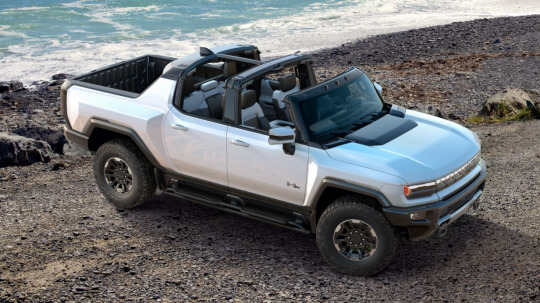
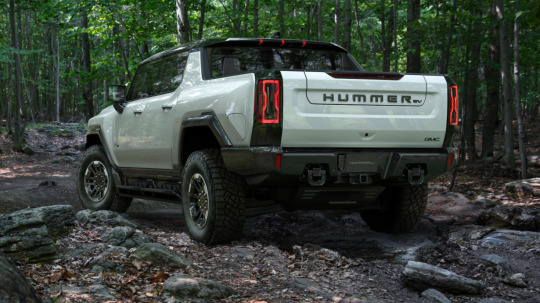

In comparison: Ford F-150 Raptor

2020 Ford F-150 Raptor
The current best-selling pickup truck, and automobile, in the US is the Ford F-series. The F-series includes a wide variety of trims and configurations, from more “light duty” models like the F-150, to more “heavy duty” models like the F-450. The best selling within the lineup is the F-150. Since all specifications of the aforementioned electric pickups will be from top trim models, we will use a top trim F-150 for comparison. The two highest trims are the Limited and the Raptor. We will benchmark against the F-150 Raptor, as its more performance-focused nature matches closer with its electric siblings.
Vehicle Specifications

Taking all these different offerings into one big picture, we can see that electric pickup trucks are an attractive alternative to industry-standard gas-guzzlers. Two of the electric pickups presented (no info yet for Hummer EV) have higher towing and payload capacity than the Raptor. Horsepower and torque numbers are significantly higher for two of the electrics as well (no info yet for Tesla Cybertruck). And finally, acceleration is much quicker for all three of the electrics. Range, on the other hand, is surprisingly relatively equivalent between the electrics and the Raptor, with the Raptor actually coming out on top when equipped with an optional 36 gallon tank (576 miles of range). But, this comparison is not 1:1, because of unequally matched horsepower and torque between the different models. Taking all the numbers here at face-value for the purposes of this comparison, we can see that while the maximum range of the 36-gallon Raptor may be greater, it only makes about 60% of the power and torque of the Rivian R1T. If the Raptor made the same level of power and torque (an approximate 40% gain), its 30% advantage in range would likely be negated. Thus, electric power likely provides greater range than gas, even if this cannot immediately be seen in the numbers presented, due to the disproportionately higher horsepower and torque of the electrics.
Note: While the closest comparison to the Raptor is the Cybertruck in terms of range, since Tesla has not yet released information regarding horsepower and torque, the next closest match-up is the Rivian R1T.
Conclusion
Throughout the past decade, electric power has proven itself capable of providing two extremes at once: high efficiency and high performance. While mass adaptation of electric vehicles is a gradual process that will inevitably take a number of more years or even decades, the technology has already demonstrated that it can provide for a wide variety of vehicle and driver needs, whether it be efficiency, performance or ease of use.
But the technology still has areas to grow and develop. The first thing that comes to mind is charging time. Charging up an electric vehicle is nowhere near as quick as filling up with gas. Even if you can charge an electric car at home, for mass adaptation of electric vehicles to happen, charging would have to evolve to be quick and convenient, so that one can charge their car on the go if needed. Hopefully the technology will develop to the point where it will only take a few minutes to charge a full battery, just like a quick stop at the gas station.
But even considering this, electric vehicles have already presented themselves favorably. Efficiency and performance can now be one in the same. With rising concerns of climate change, electric cars in general, and electric pickup trucks in specific, are likely to be the future.
#electriccar#electriccars#Tesla#Cybertruck#Rivian#GMC#Hummer#HummerEV#pickuptruck#pickuptrucks#offroad#carblog#autoblog#carblogging#americancars#bestcars#carlifestyle#carlove#amazingcars
1 note
·
View note
Text
2022 Acura MDX: Precision Crafted Performance Evolved

Acura’s “Precision Crafted Performance” motto represents the brand’s dedication to designing vehicles that not only look sporty, but also drive sporty with dynamic handling and athletic performance.
The newly announced 2022 MDX Prototype features a sharp, streamlined and athletic exterior design with a highly detailed and luxurious interior. Matched with the athletic looks is handling tuning and driving technology that aim to achieve a fun driving experience.
This article will compare the 2022 MDX Prototype with the current 2020 model in terms of design and performance.
Exterior
Looking at the exterior of the 2022 prototype, we can see that the new design shares a resemblance with the current model in its general styling approach. But through a number of key design changes in proportion, contour and sharpness, the new MDX looks more confident, poised and mature.
Front
The front fascia has design commonalities with the current model, such as Acura’s signature Jewel Eye headlights and diamond-hexagon grille. But the proportions of these features, and how they all fit together, has changed noticeably. The headlights are now slimmer, the grille wider, the bumper smoother and more concave, the lower air inlet larger and more dramatic, and the fog light assembly neater and more tucked away. Additionally, there are now new vertical air vents that visually connect the fog light assembly with the headlights. These changes, while not too dramatic, add up to make a more streamlined and modern looking front fascia.
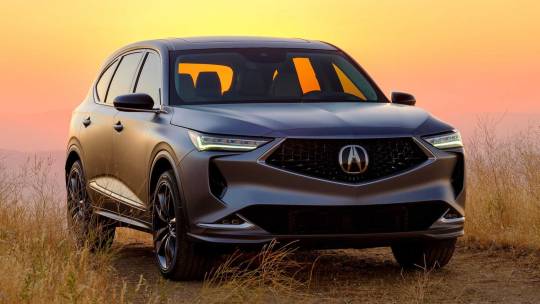
2022 MDX Prototype
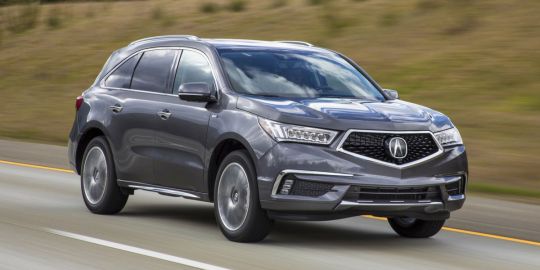
2020 MDX
Rear
The rear also shares design characteristics with the current MDX, but as with the front, changes to the proportion and fitment of various design elements gives the new model a sleeker and more modern look at the rear. The taillights are now slimmer but with a more dramatic and angled shape. The chrome bar connecting the taillights has been removed, helping maintain a minimalist look. The bumper lines are now much sharper and more angled, coming together at distinct points in the middle. And a new horizontal silver line spanning the entirety of the bumper adds a touch of detail and luxury. Overall, the rear has evolved to look visually cleaner, with a more minimalist approach when compared to the current model.
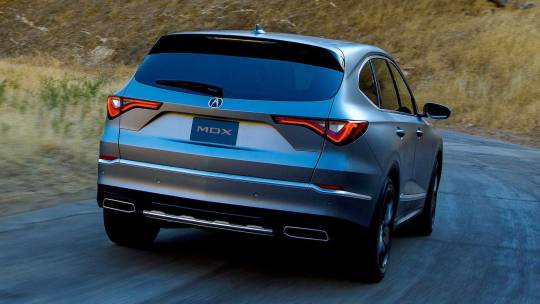
2022 MDX Prototype rear
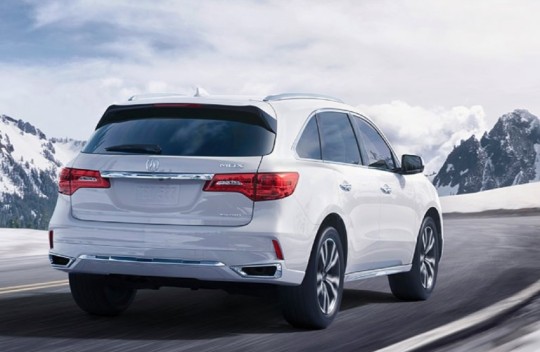
2020 MDX rear
Side
For the 2022 model, Acura has made the body wider, longer and lower. This, combined with an increased sharpness of the body lines, gives the new MDX a fresh aurora of confidence and luxury. We can see a noticeably longer hood, a more squared-off front, a more pronounced lower door body line, and the addition of two new body lines: one spanning the entirety of the side from headlight to taillight, and one that flows from the top of the windows down towards the top of the rear quarter panel.

2022 MDX Prototype side
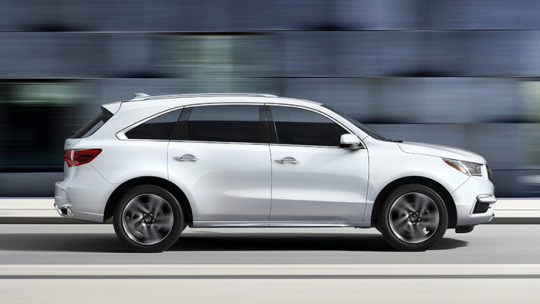
2020 MDX side
Interior
The interior has improved significantly in its design, detail and luxury. The new dashboard appears narrower on a horizontal plane, giving it a sportier look. And, from what can be seen in the photos, the dashboard and screen protrude upward less, potentially improving forward visibility. The seats are far more sporty and luxurious, boasting pronounced lateral supports and an elaborate stitching pattern. Around the door handles is a matte wood grain embellishment and around the nearby door speakers is a detailed perforated aluminum cover. Adding further to the luxury, the new MDX will now come with optional massaging front seats, ambient lighting, full-roof panoramic sunroof and a 25-speaker audio system.

2022 MDX Prototype interior

2020 MDX interior

2022 MDX Prototype seats
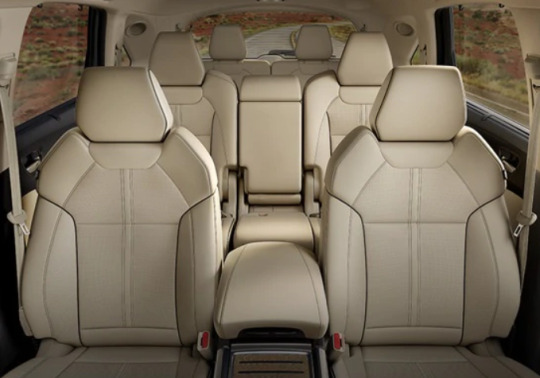
2020 MDX seats
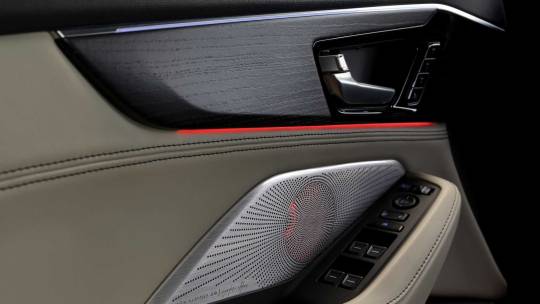
2022 MDX Prototype door trim
Performance
The 2022 MDX features a number of performance upgrades that aim to provide a more engaging driving experience. To improve body stability and reduce lateral body roll through corners, the chassis is built more rigidly, the springs and anti-sway bars are stiffer and the front suspension is now a double-wishbone type, replacing the MacPherson-strut front suspension setup of the current model. The key advantages of double-wishbone suspension are that it allows for a lower center of gravity and improved contact between the wheels and the ground, due to a reduced effect of weight and inertia on camber angle as the vehicle moves. A new drive mode selector will allow the driver to adjust handling, steering, suspension and powertrain behavior. The transmission is a new 10-speed automatic (replacing the current model’s 9-speed) with a shorter first gear, which should improve power delivery and acceleration from a stand-still. Standard 2022 MDXs will receive the same engine as from the current model, which is a 3.5-liter naturally aspirated V6 with 290 hp and 267 lb-ft of torque. But a new Type-S variant will be powered by Acura’s recently introduced 3.0-liter turbocharged V6 with 355 hp and 354 lb-ft of torque. The Type-S will likely feature a number of other performance and handling upgrades over the standard MDX.
Final Thoughts
The 2022 MDX Prototype is quite the looker, with impressive exterior and interior designs that evoke a sense of confidence and charisma in the vehicle. Performance has been upgraded in a number of key ways that should give the new MDX an edge in handling and driver engagement.
Despite being a prototype, considering it’s going on sale early next year, it is likely entirely production-ready. Current information suggests an estimated base price of $47k.
With all the improvements in design and upgrades in performance, the 2022 MDX could set a new standard of Precision Crafted Performance.
#Acura#MDX#AcuraMDX#SUV#performancecar#luxurycar#autoblog#carblog#carblogging#carenthusiast#newcar#futurecar#prototype#japanesecar#carlove#carlifestyle#amazingcars#bestcars#carnews
2 notes
·
View notes
Text
Lexus J201: The Off-Roader’s Fantasy

Lexus LX
At first glance, the Lexus LX570 impresses with its large proportions and showy looks. But what might not be immediately obvious to the passerby, is that hidden underneath all the luxury and glamour, is a highly capable off-road vehicle the likes of Jeep Wrangler, Ford Bronco and Mercedes G-Class.
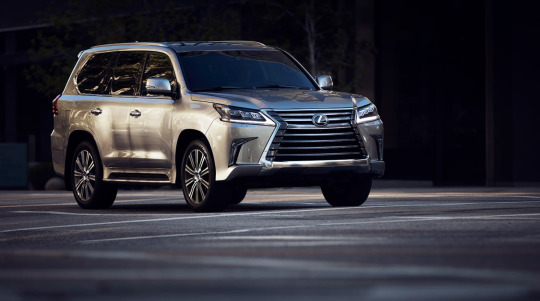
2021 Lexus LX570
Lexus has been known for its off-road capable vehicles for decades now. The two key models include the LX and GX, both of which exist thanks to the Toyota Land Cruiser, which they are based on. With versatile performance on any terrain, the LX570 boasts excellent body stability on uneven surfaces, responsive steering, adaptive air suspension, crawl control, real-time four-wheel-drive with active traction control and 7000-lb towing capacity. It is a tough brick that likes to get its shoes dirty.
For those who desire to get more out of their LX, either new or old, there is a plethora of aftermarket parts and upgrades available that further enhance its off-road capabilities. Everything from lift kits, to body kits, light bars, snorkels, tires, wheels, brakes, suspension… and the list goes on. Upgrading your car with aftermarket performance parts is a great way to improve its functionality and to personalize it. With the vast amount of parts available for the LX570, there is everything one needs to make it their dream off-roader.
J201 Concept
The J201 Concept is an LX570 that has been fine-tuned with aftermarket performance parts. Its inspiration comes from the large community of Lexus SUV owners who love to venture off-road and explore the great outdoors. Lexus calls this group of people “Experimental Adventurers,” and has built the J201 Concept with them in mind. The name “J201” comes from the internal model code for the LX. J201 is the chassis code, which is well known among off-roading enthusiasts.
Exterior Upgrades
Front and rear off-road bumpers that add under-body reinforcement and improve ground clearance
Front bumper winch and light bar
Rear bumper lights
Trunk-mounted spare tire, ladder and water cans
Roof rack and roof light bar
Downsized wheels (from 20” to 17”) that make room for off-road tires with large sidewall and deep grooves
Drilled front and rear brake rotors with performance pads
Upgraded suspension control arms and spacers
Adjusted height sensors that allow for higher air suspension lift
Under-body protection in the form of rock sliders and skid plates.

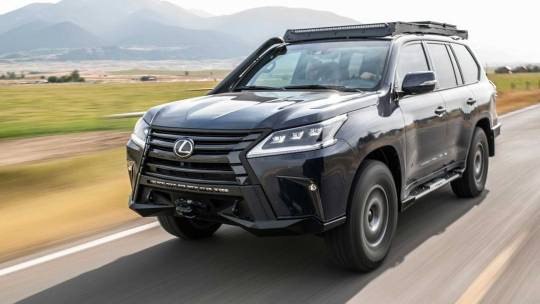


J201 Closed Swing-Outs

Open Swing-Outs
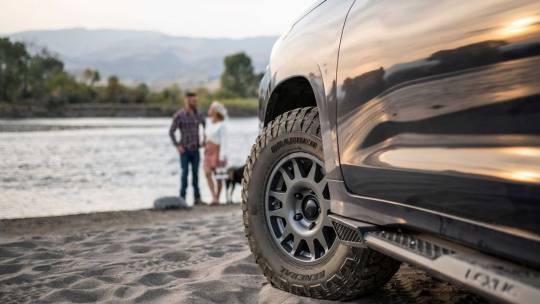
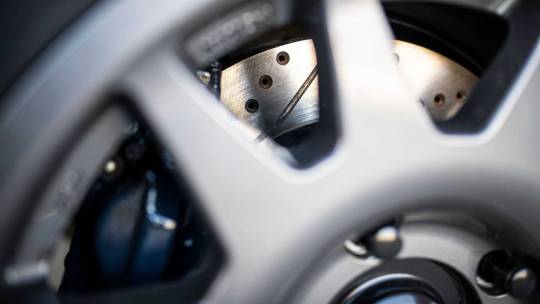
J201 Drilled Brake Rotors
Engine/Drivetrain Upgrades
Supercharger that boosts power output to 550 hp and 550 lb-ft of torque (compared to the original 383 hp and 403 lb-ft of torque)
Performance differentials
Air snorkel
Air compressor for tire inflation
Interior Upgrades
Accessory interface for controlling lighting, differential, compressor, battery and angle meter
Aluminum storage cases
Drawers with dog bowls, tools and first aid kit

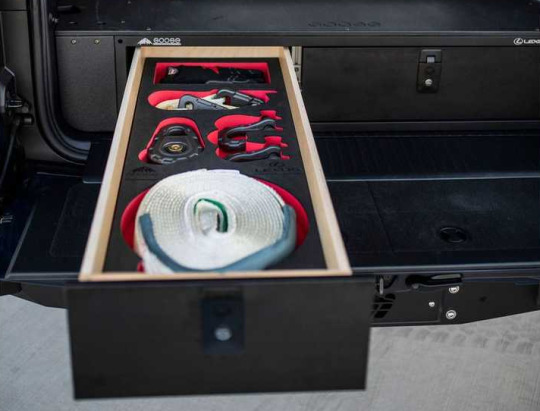
The J201 “Concept” isn’t a concept in the traditional sense, with one-off parts and a non production spec design. Rather, this is a standard LX570 with real world aftermarket parts from real brands, built to showcase the versatile capabilities of the LX platform. While the J201 Concept likely won’t make it to production, you can build one just like it using all the same parts. And if a new LX570 is pricey, older models of the LX, GX and Land Cruiser can be picked up for cheap. Even without all the fancy tech of a new LX570, they are nevertheless great platforms for driving off the beaten path and enjoying some outdoors.
The J201 is currently competing in the all-female Rebelle Rally, a week long event where participants are tasked with navigating across more than 1,200 miles of treacherous Nevada and California desert without a GPS or cell phone, moving from checkpoint to checkpoint using physical maps and a compass. With two expert drivers/navigators behind the wheel, I have no doubt the J201 will perform spectacularly.
The event can be watched live here: https://www.rebellerally.com/live/
#Lexus#LexusLX#LX570#J201#conceptcar#carnews#carblog#carblogging#bestcars#amazingcars#carlifestyle#carlove#cardesignworld#autoblog#japanesecars#offroad#offroadsuv
3 notes
·
View notes
Text
New Hyundai Tucson Redesigned with Sensuous Sportiness

Hyundai is currently amidst a transition into a new brand direction. One by one, each model in the company's lineup is being updated with their fresh, new design philosophy called Sensuous Sportiness. A number of vehicles have already been re-imagined, including the current Kona, Sonata and 2021 Elantra.
The latest addition to the collection is the recently announced 2022 Tucson.
Sensuous Sportiness
The world got its first glimpse into the future of Hyundai with the 2018 Le Fil Rouge concept, the first Hyundai designed with Sensuous Sportiness. Through diligent architecture, proportion, styling and technology, the new design philosophy aims to achieve futuristic, sporty and artfully proportioned vehicles that capture and hold the viewer's attention and have emotional value.
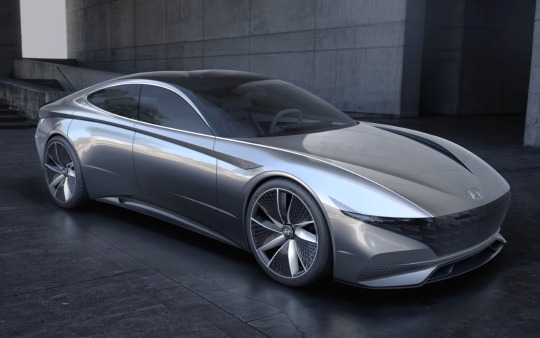
2018 Le Fil Rouge Concept
Sensuous Sportiness also aims for vehicles to be instantly recognizable as Hyundais. Key to this is the new signature “Cascading Grille.” Hyundai describes it as being inspired by the "flow of molten metal contained within a blast furnace.”
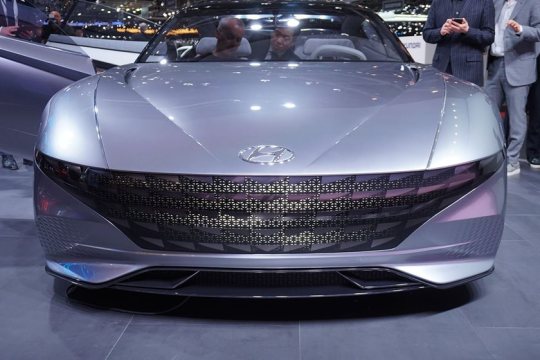
2018 Le Fil Rouge Concept Cascading Grille
2022 Hyundai Tucson
The upcoming Tucson is a rugged and angular looking vehicle, with a sharp and futuristic design that is the latest Hyundai re-imagined in Sensuous Sportiness.
Front
The front features Hyundai’s signature cascading grille, similar to the one found on the Le Fil Rouge concept, with seamlessly integrated headlights that blend into the grille when turned off. It will be interesting to see how the effect looks in real life.
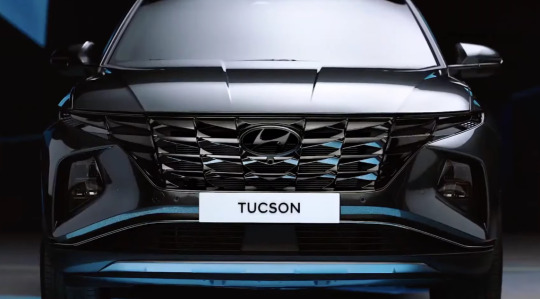
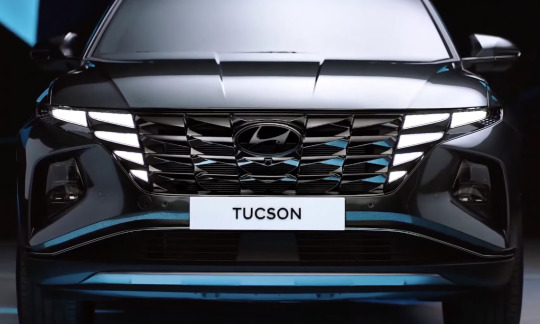
2022 Hyundai Tucson hidden headlights
As a subtle decorative feature, we can see geometric patterns along the headlights that add an extra touch of detail.

Geometric headlight details
As the eye moves from the headlights, to the rest of the grille and down to the bumper, there is an overall sense of smooth visual flow. This can be attributed to the design of the lower air inlet underneath the grille, which mirrors the shape of the grille, creating visual balance between the upper and lower areas of the front fascia.
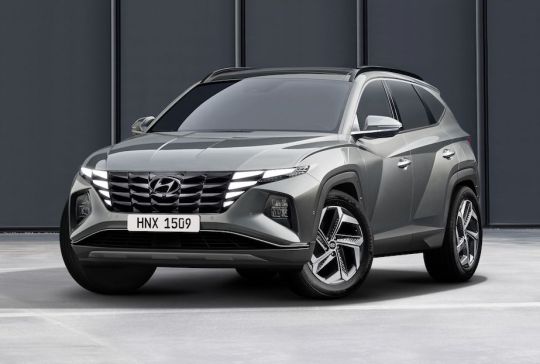
2022 Hyundai Tucson
Comparing the production model to the preceding Vision T concept, we can see that the design has remained mostly identical, giving the Tucson a very distinguished concept car look.

Vision T Concept
Side
The side profile continues the futuristic and concept-like look though sharp and angular body lines that meet to create triangular and rectangular surfaces. This design element Hyundai calls “Parametric Dynamics." To make the Tucson look longer, the horizontal distance between the wheels (wheelbase) was extended, and the distance between the front/rear wheels and the front/rear edges of the vehicle (overhang) was shortened.

2022 Hyundai Tucson side profile
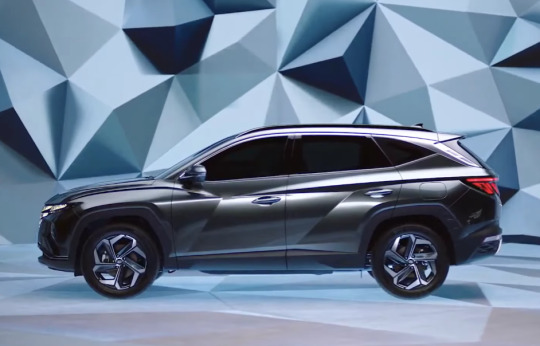
Side profile with reflections
Rear
The rear features a taillight assembly with two triangular fang-shaped brake lights on either side, connected by a horizontal light bar, which creates a sense of width. Within the brake lights themselves is a subtle triangular pattern. The lower portion of the bumper has a similar pattern as the cascading grille, with a wide diffuser in the middle which gives a tough, off-road look. Finally, the Hyundai badge is interestingly placed within the vicinity of the rear windshield instead of on the trunk lid. The location of the Hyundai badge is typically where the rear windshield wiper blade is attached on most crossovers and SUVs. But here the wiper blade is instead attached to the top of the windshield, hidden underneath the rear spoiler, to keep a clean look. In total, like the front and side, the rear looks very futuristic and concept-like.

2022 Hyundai Tucson rear

Taillight details
Interior
The interior has a sleek and ergonomic design. The door panels, dashboard and center console are all visually connected through a series of continuous lines, as if the interior was drawn with a single brushstroke. The vents are well integrated into the upper portion of the dashboard, further contributing to the smooth visual flow. The center console is very clean and minimal looking. A traditional gear selector stick has been replaced with buttons that maintain the sleek look. Overall, the interior is easy on the eyes, with great visual continuity between the different areas and with an open, spacious feel.

2022 Hyundai Tucson interior

Steering wheel and dashboard close-up
Technology
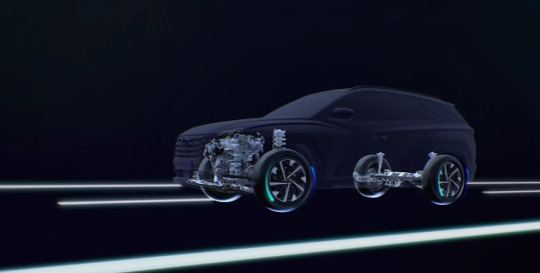
The Tucson features a wide array of technology. A park assist feature allows you to step out of the vehicle while the car finishes parking, which is ideal for tight spaces so you don’t have to squeeze your way in and out of the car. A smart home connectivity feature allows you to control smart home appliances from your car. You can, for example, activate the air conditioning or heater to bring your home to the ideal temperature while on the road. A valet mode hides private data in the infotainment system (such as your home address) and saves the vehicle's driving information, such as driving time, driving distance, when the ignition was last turned off and even GPS data, for later viewing. A number of autonomous driving aids help prevent collisions by taking control of the vehicle for a short period of time in emergencies. And finally, a multi-terrain mode modulates the power delivery to each wheel individually when all-wheel-drive is equipped, to supply needed traction in mud, sand and snow.
A variety of powertrains will be offered, including gas, diesel, hybrid and plug-in hybrid, for a total of 12 engine options. Not all will be offered in any one market, as the Tucson will receive only a handful of options for each market that best suit the needs of drivers there.
Final Impressions
Sensuous Sportiness is a promising design philosophy for a new generation of Hyundai vehicles. The uniquely designed 2022 Tucson certainly catches the eye with its carefully crafted grille, headlights, taillights, body lines and overall proportions. The interior looks smooth thanks to flowing lines that create a welcoming sense of balance and comfort, a nice contrast to the sporty and aggressive exterior.
Standing out of the crowd with a bold look that challenges design conventions is second nature for the new Tucson. It will go on sale early-mid next year.
#Hyundai#Tucson#HyundaiTucson#newcar#carnews#carblog#carblogging#bestcars#amazingcars#carlifestyle#carlove#cardesignworld#futurecar#koreancar#autoblog
0 notes
Text
The Return of Z
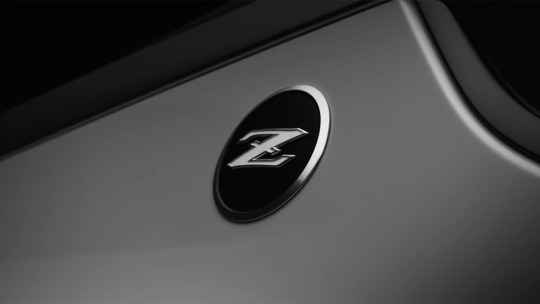
June 2009 marked the debut of the sixth generation Nissan Z-car: The 370Z. Since then, it has been updated a number of times, including the introduction of the Nismo trim. The 370Z Nismo features various aerodynamic, interior, power, handling and ECU tuning upgrades. But, despite the time and effort put into the 370Z over the years, it is almost entirely the same car that debuted back in 2009 in terms of design and technology. With it still being sold new in 2020, it no longer feels like the fresh modern sports car it once was due to its dated looking interior and minimally updated exterior.
11 years of production for a single model is a long time. Z fans have been longing for a new model for quite some time now…
Unveiled on September 15, 2020, the new Nissan Z Proto is a preview of the upcoming seventh generation Z-car to replace the aging 370. Finally!
Like Z cars of the past, it will feature a V6 engine, RWD drivetrain, two doors, two seats and a standard 6 speed manual transmission.
Exterior
The most interesting aspect of the Z Proto, rumored to be called 400Z once it reaches production, is the design. Let’s begin with the exterior. The exterior design is heavily inspired by classic Z cars of the past. This mainly includes the original Datsun 240Z from the early to late 70s and the fourth generation 300ZX of the 90s.
Front
The front fascia is all 240Z inspired. The headlight shape is designed to resemble the 240Z’s entire headlamp assembly, not just the circular headlights themselves, which includes the surrounding tear-drop shaped housing. According to Alfonso Albaisa, Senior vice president of Global Design for Nissan, the two half-circle LED daytime running light arcs are designed to represent the natural reflections of a 240Z headlamp assembly with glass covers specifically.
The grille is almost identical to that of the classic, with a blunt rectangular shape that visually connects to the headlights through a swooping bumper line that runs underneath the lights.
Another notable detail is the triangular bulge on the hood, just like on the original.

Z Proto front

1971 Datsun 240Z front

240Z with glass headlight cover
Personally, I love the front fascia design as is because of its immediate resemblance to the original Z of the 70s in an elegant modern-retro rendition. But it is currently the center of debate and mixed opinion, with the grille being the most talked about aspect. One potential design concern I can see with the current grille shape is that it may be a bit too rectangular considering the flowing lines of the headlights and overall body shape. However, I believe that it is a necessary design element because of its key role in the Proto’s beautifully crafted resemblance to the original 240Z that takes no more than a second to recognize.
Side
Moving to the side-profile, and we see an overall resemblance to the classic sports coupe shape of the 240Z, with a sloped rear, elongated hood, small triangular rear-quarter window, and, my favorite, a rear-quarter panel mounted Z badge. Awesome!

Z Proto side
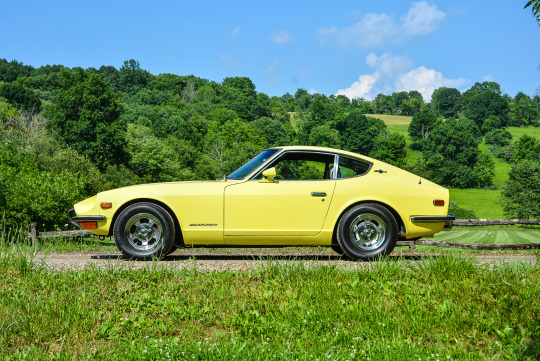
240Z side
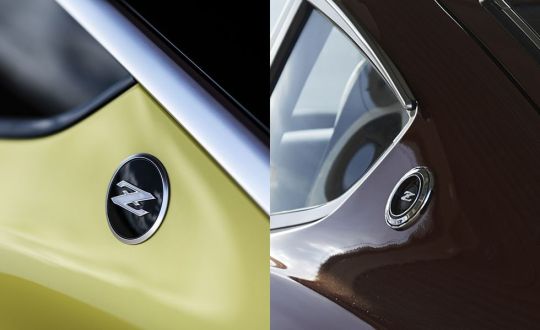
Z Proto and 240Z rear quarter panel badge
Rear
Now let’s get to the rear. Here we have a resemblance to a different classic Z-car. The 90’s 300ZX. This can be seen in the horizontal double rectangle brake lights, with a black painted area in between. This is exactly the design of the taillights of the 300ZX, but with modern LED technology. We can also see some 300ZX in the bumper design, with a horizontal line underlining the taillight assembly.

Z Proto rear

90′s 300ZX rear
A cool detail to note about the rear is the diagonal trunk-mounted Fairlady Z badge, made to the style of the original “Datsun 240Z” badge. “Fairlady” is the name used for Z cars sold in Japan. For example, the 370Z is called Fairlady Z Z34 in Japan (Z34 being the code for the sixth generation Z).
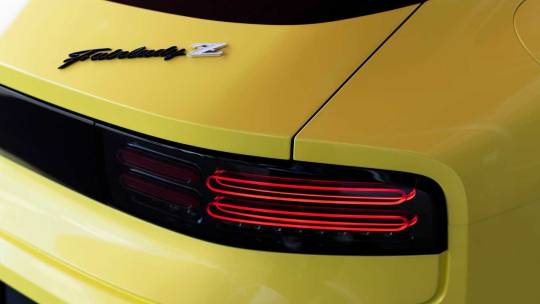
Z Proto “Fairlady Z” badge
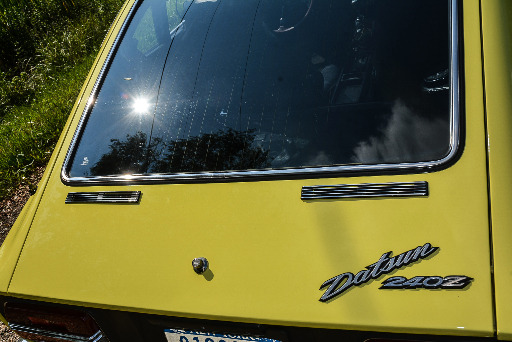
Datsun 240Z badge
Interior
Transitioning to the interior, and we have a modern, sleek and sporty design. The center gauge cluster is all digital. The main center dashboard is clean with minimal buttons. The steering wheel looks slim and comfortable for the hands. The analog gauges on top of the dashboard are a throwback to the 240Z. The contrast yellow stitching across the dashboard, armrests and seats is a neat color-coded touch to the yellow exterior. And finally, the 6 speed manual transmission and physical e-brake are welcoming features in a world where manual transmissions are becoming rare even among sports cars, and physical e-brakes have almost entirely been replaced with buttons.

Z Proto interior
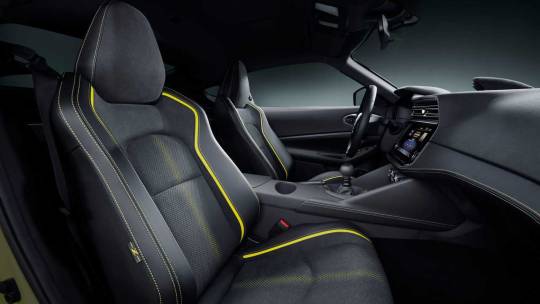
Z Proto yellow-stitched seats
While the interior does not share the exterior’s affection for classic Z cars (aside from the analog pod gauges), its design looks well-suited for a modern sports car of the 2020’s.
An interesting detail about the interior is the door handles and side vents. I noticed almost immediately that they are identical to the ones in the 370Z, which itself had the same door handles and side vents as the preceding 350Z of the early 2000’s. This means that there could be more parts in the Z Proto that have been taken directly from the 370Z, potentially to reduce cost of production once it goes on sale. Personally I don’t mind this, considering the otherwise brand new design inside and out.
Conclusion
Overall, the design of the Z Proto has left a strong positive impression. It looks sleek, streamlined and beautifully modern-retro. Current information suggests a 2021 release, which would likely make the 400Z a 2022 model year car, with an estimated base price of $45,000. It will be powered by a 300 hp, 3.0 liter twin turbo V6 from the current Infiniti Q60.
Considering the estimated release date, the Z Proto is likely almost entirely production-ready in terms of design and technology. So despite being a prototype, what we see here today, is likely what we will see next year. Some minor changes are always a possibility though.
Enthusiasts have waited long enough for a new Z-car, and we are nearly there. A new era of Z is coming.
#Nissan#NissanZ#NissanZProto#400Z#Nissan400Z#futurecar#sportscar#japanesecar#jdm#jdmcar#carblog#carblogging#carlove#sixspeed#savethemanuals#amazingcars
2 notes
·
View notes